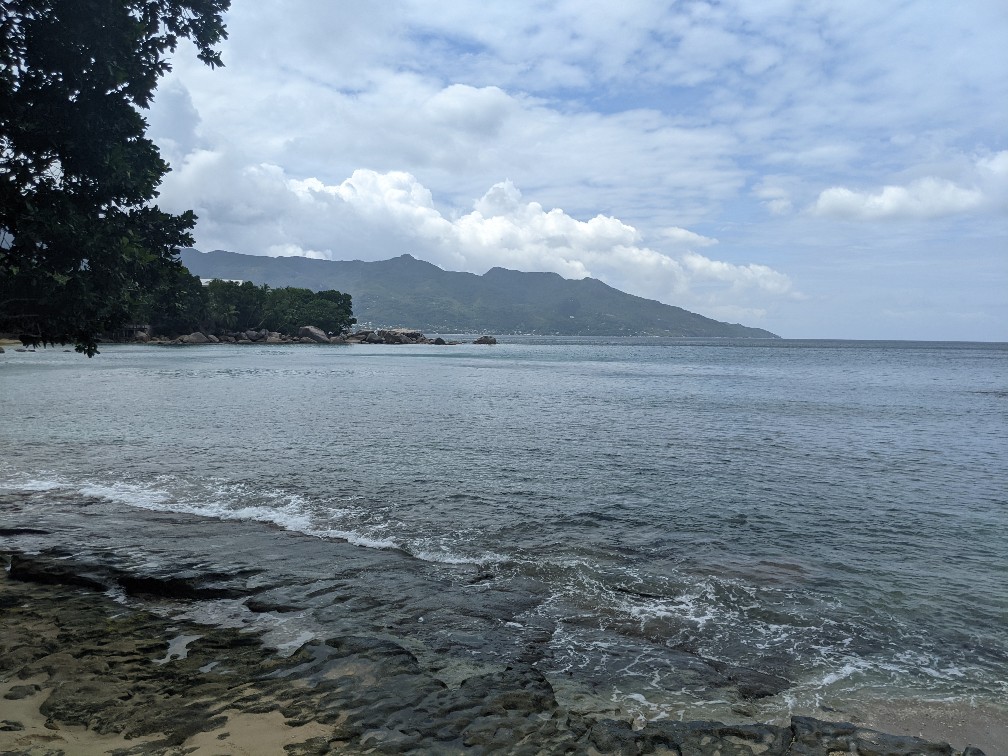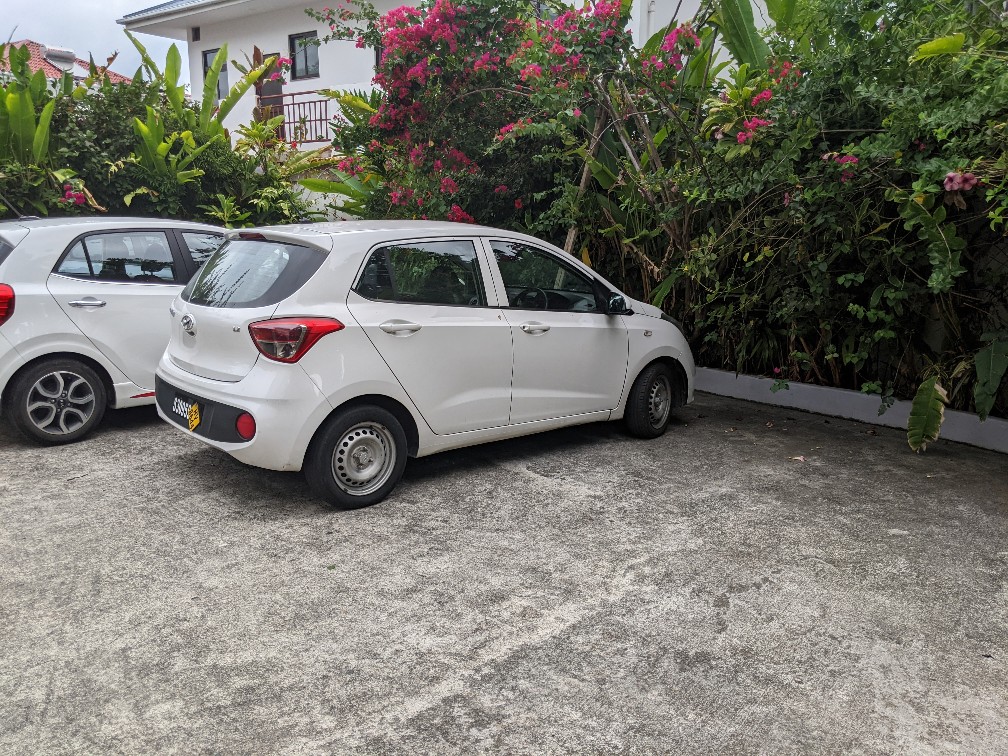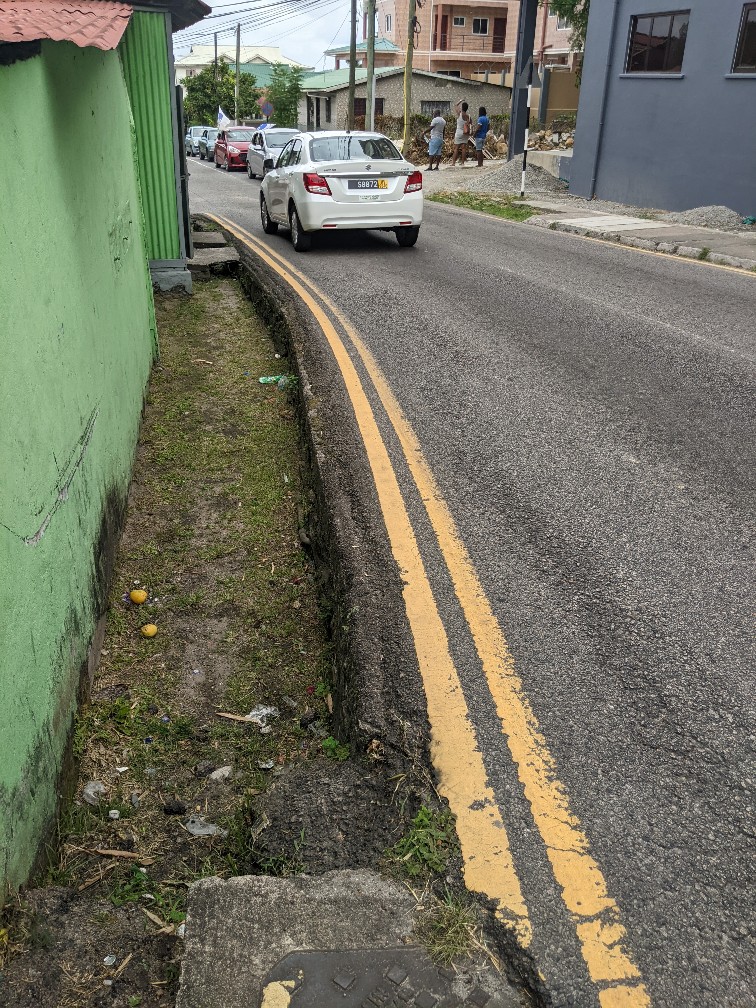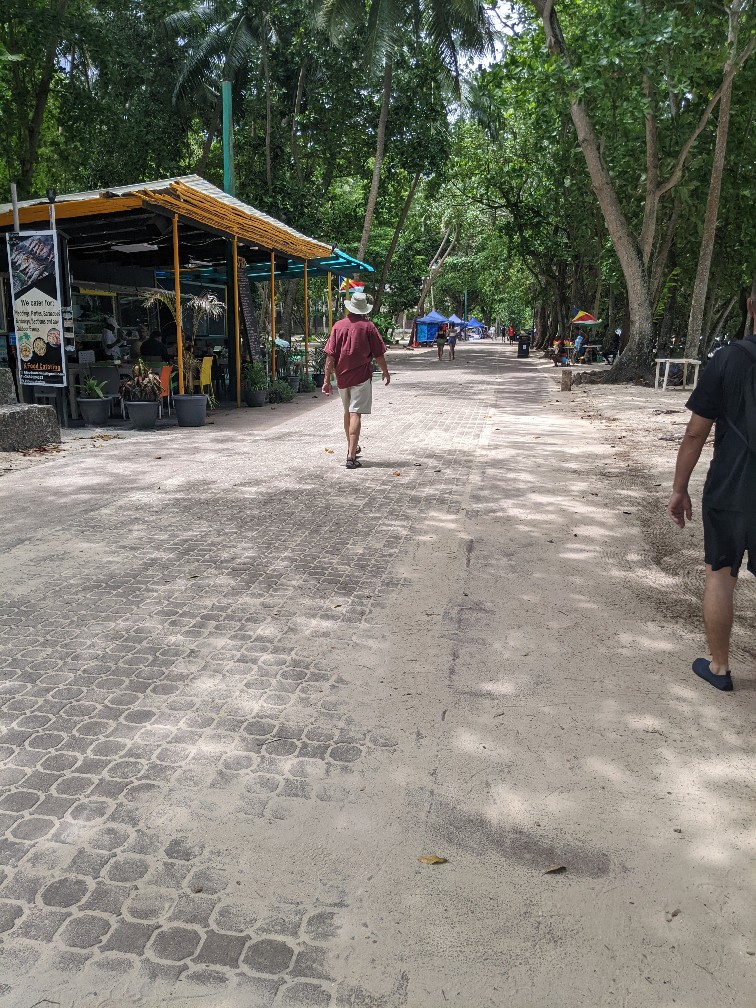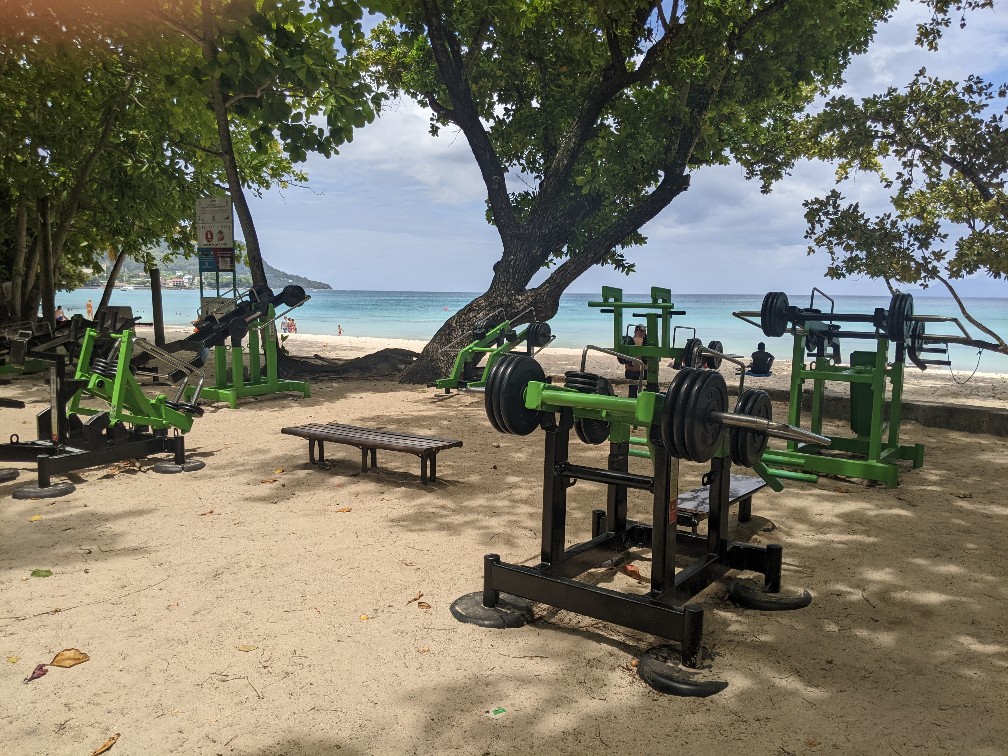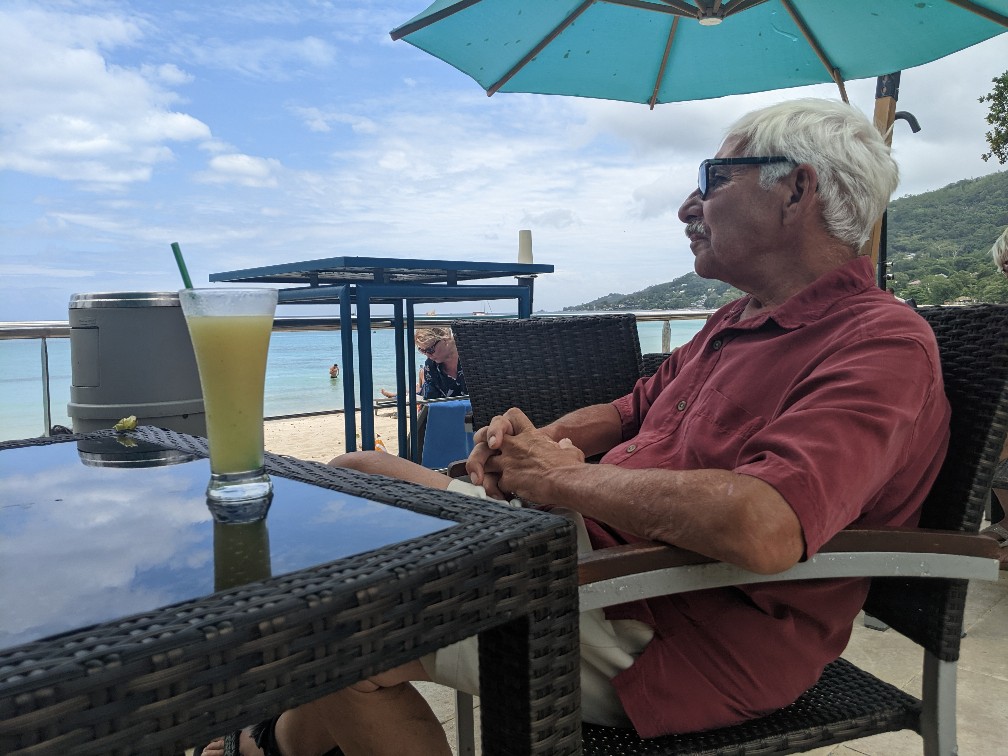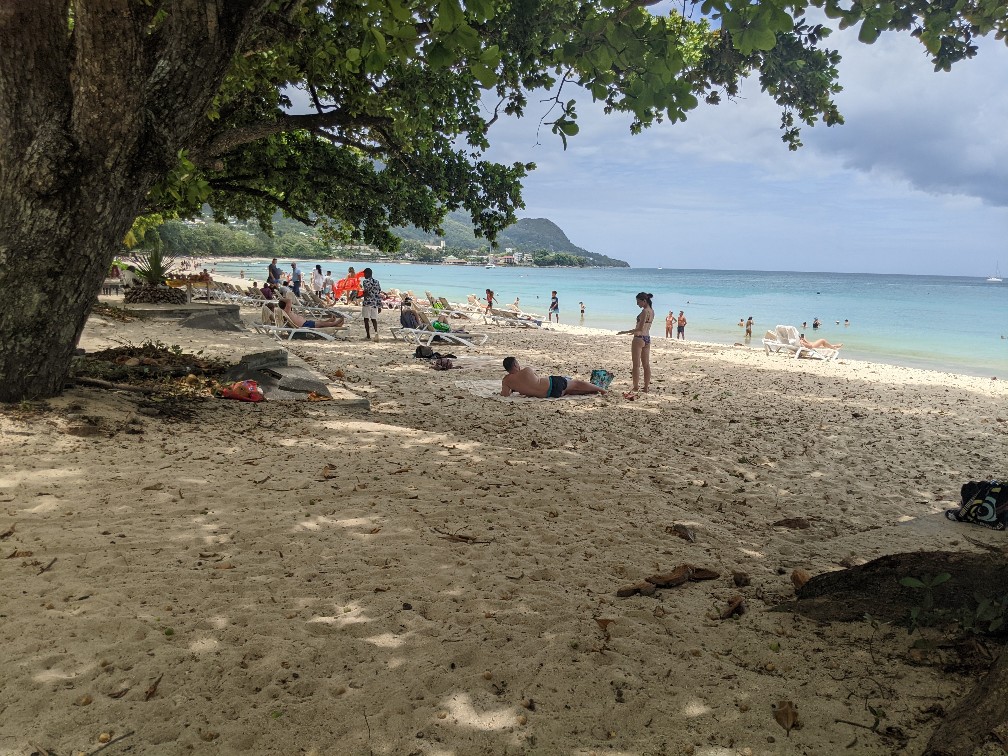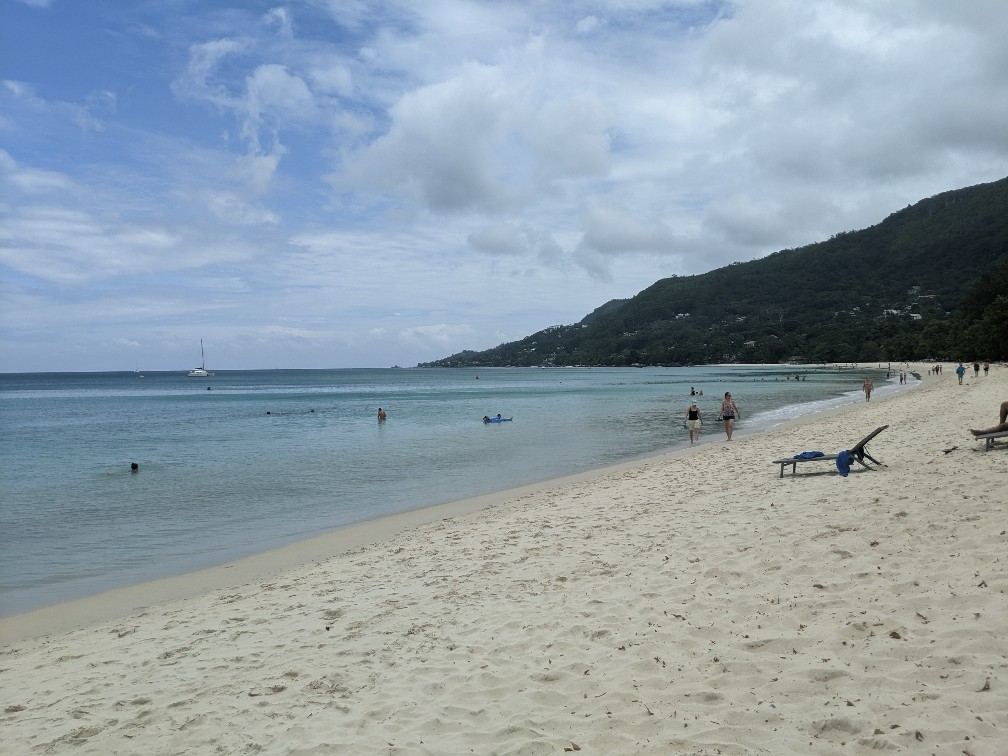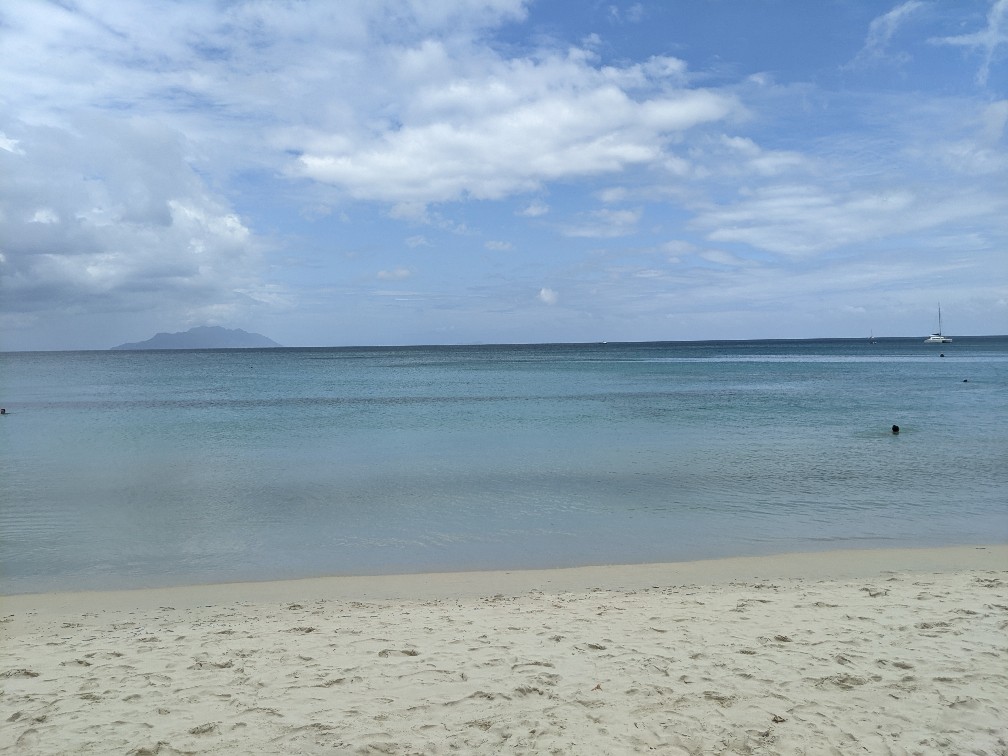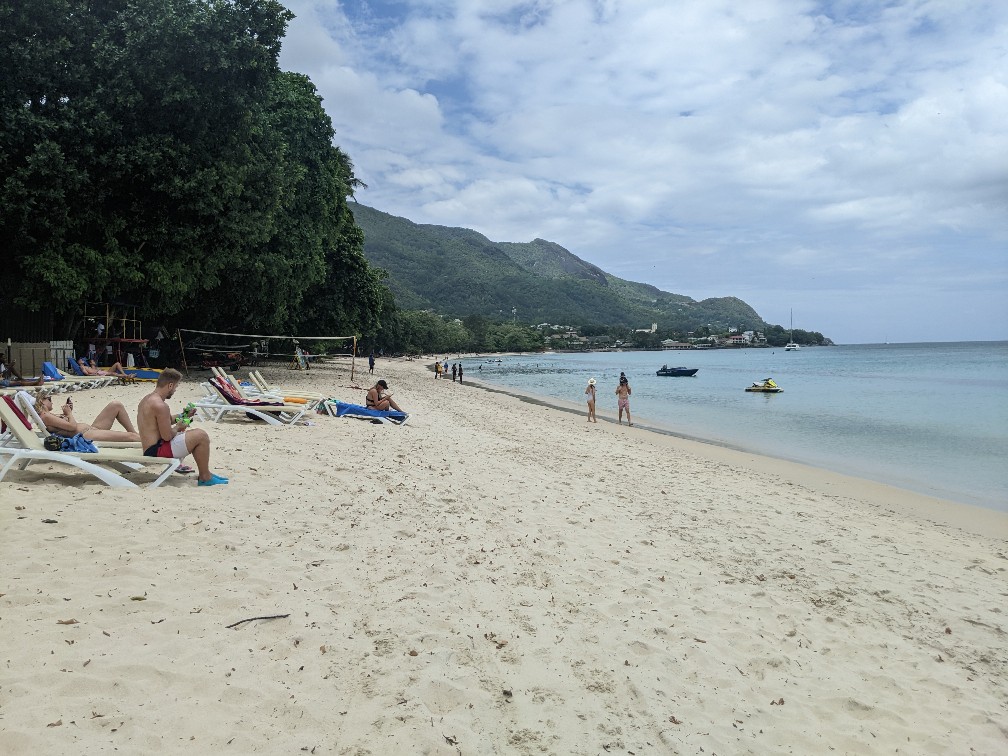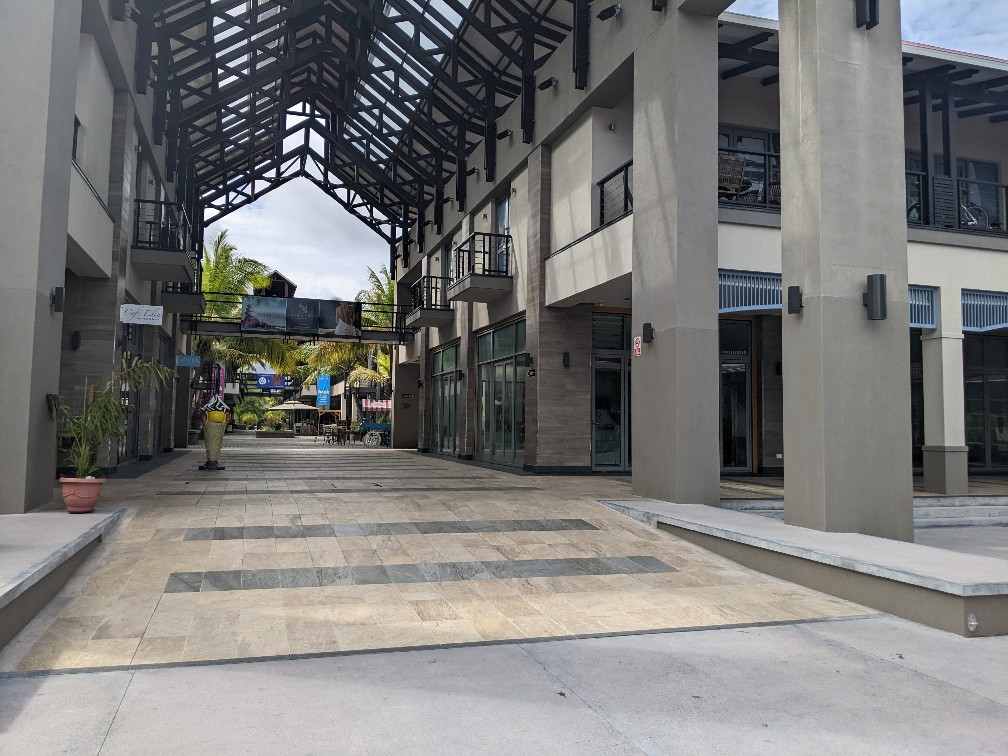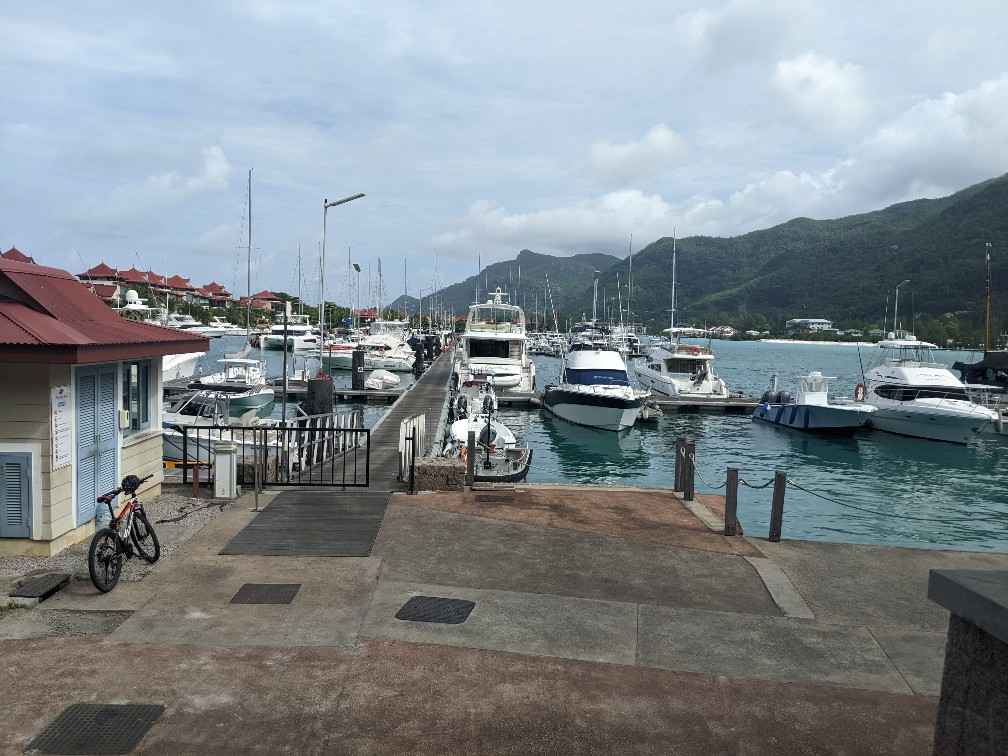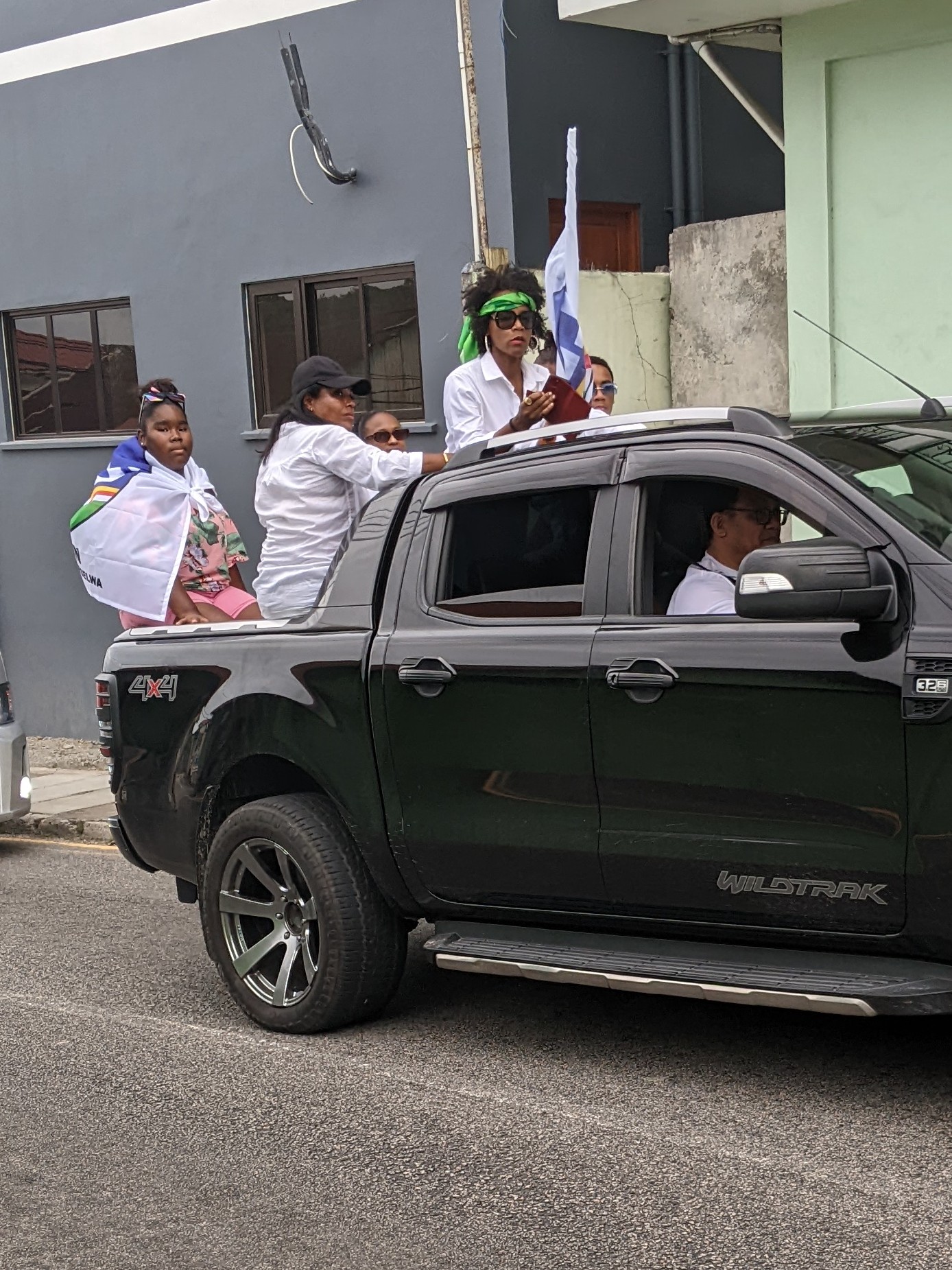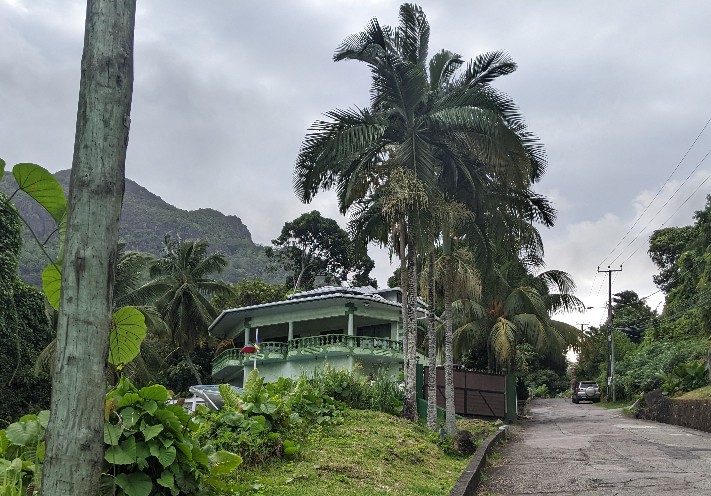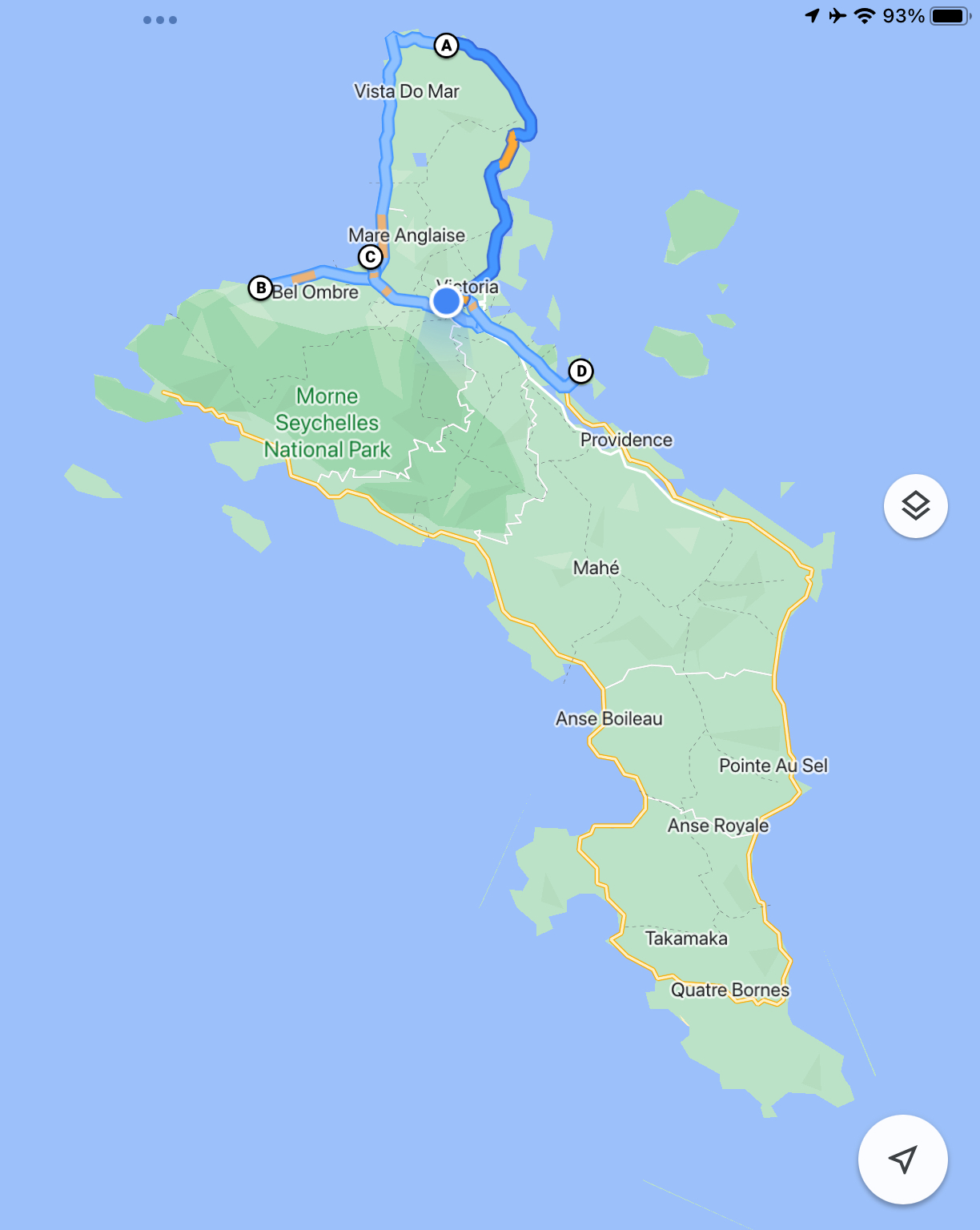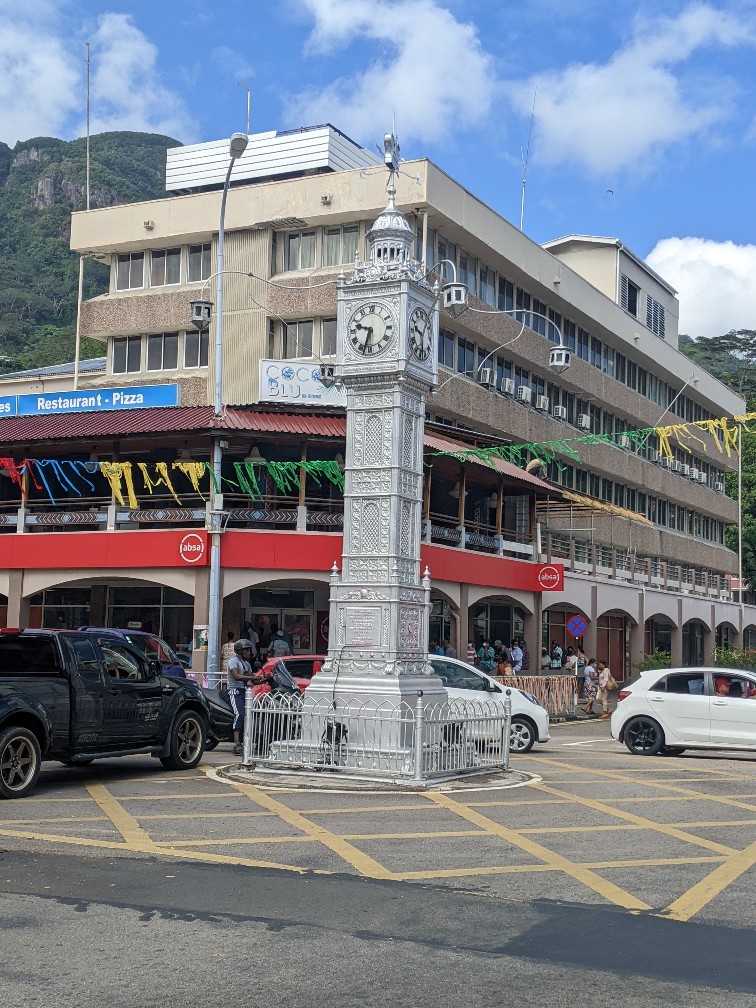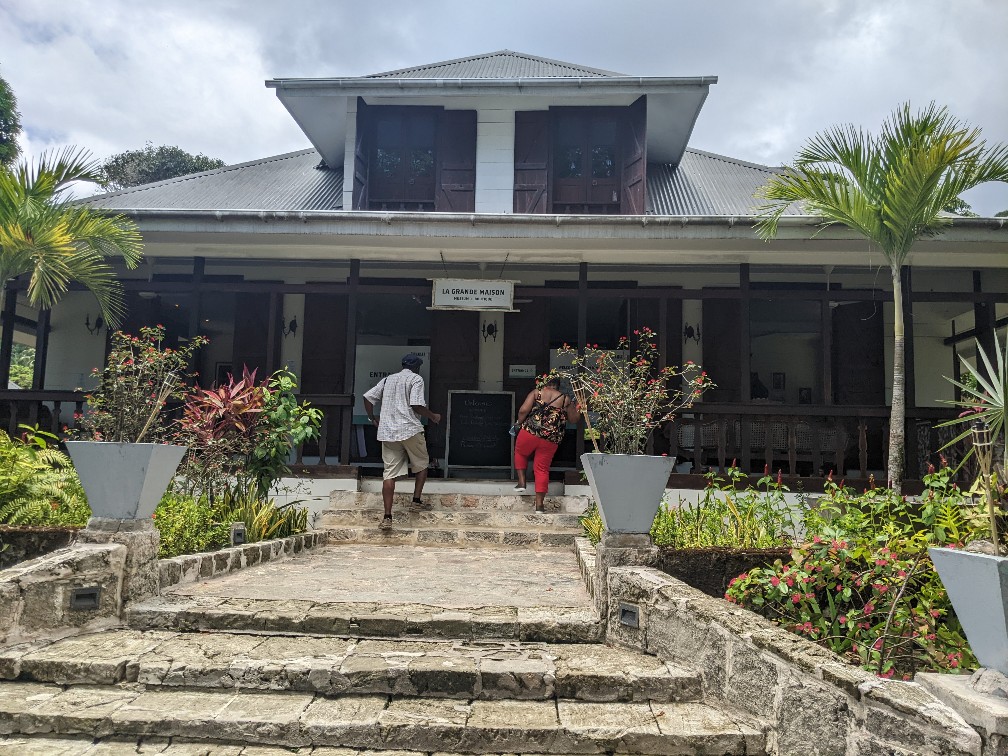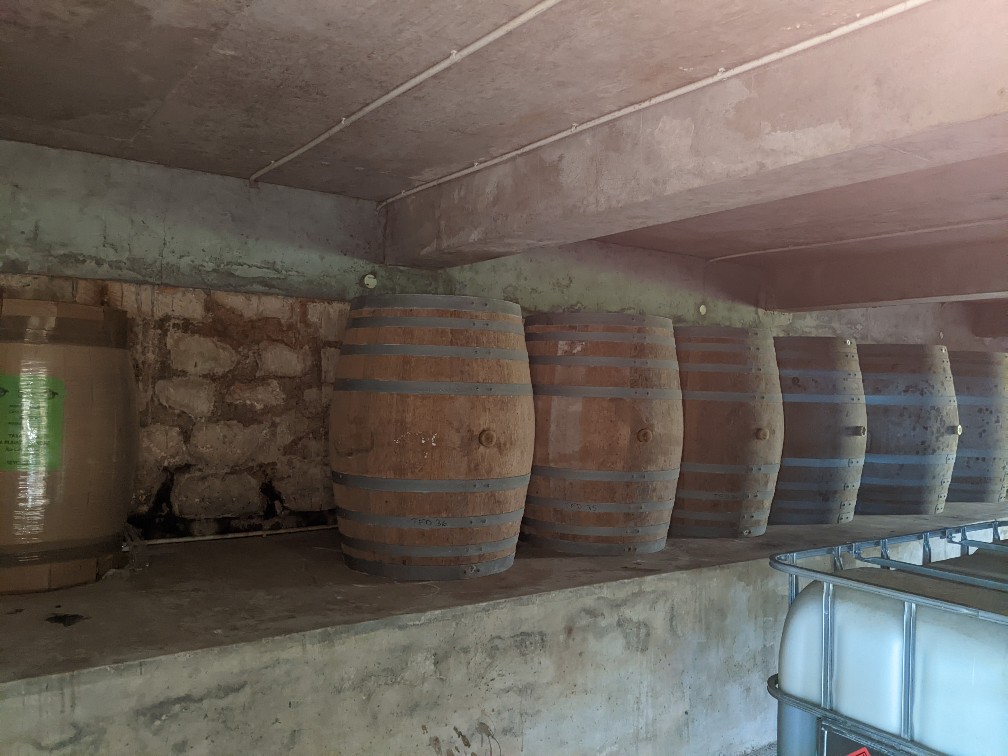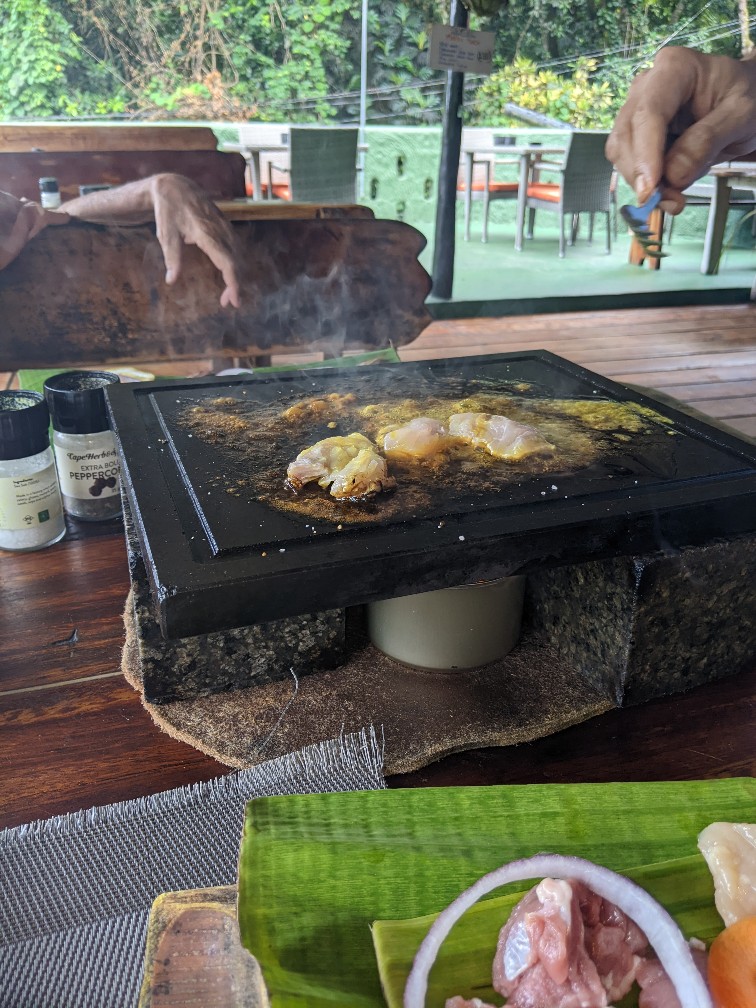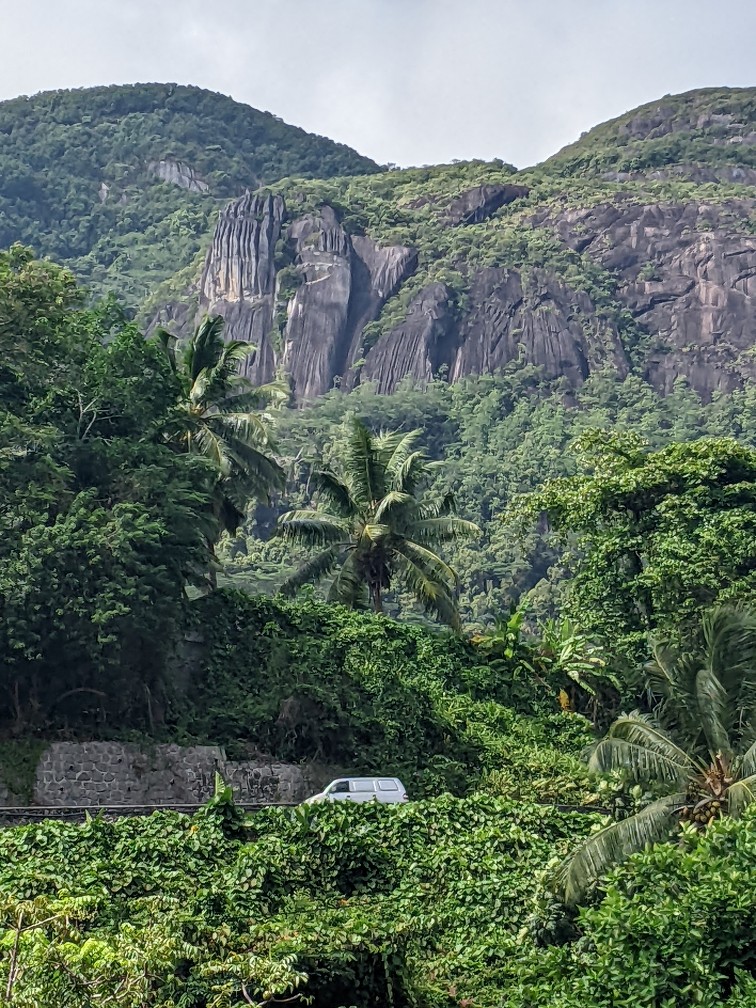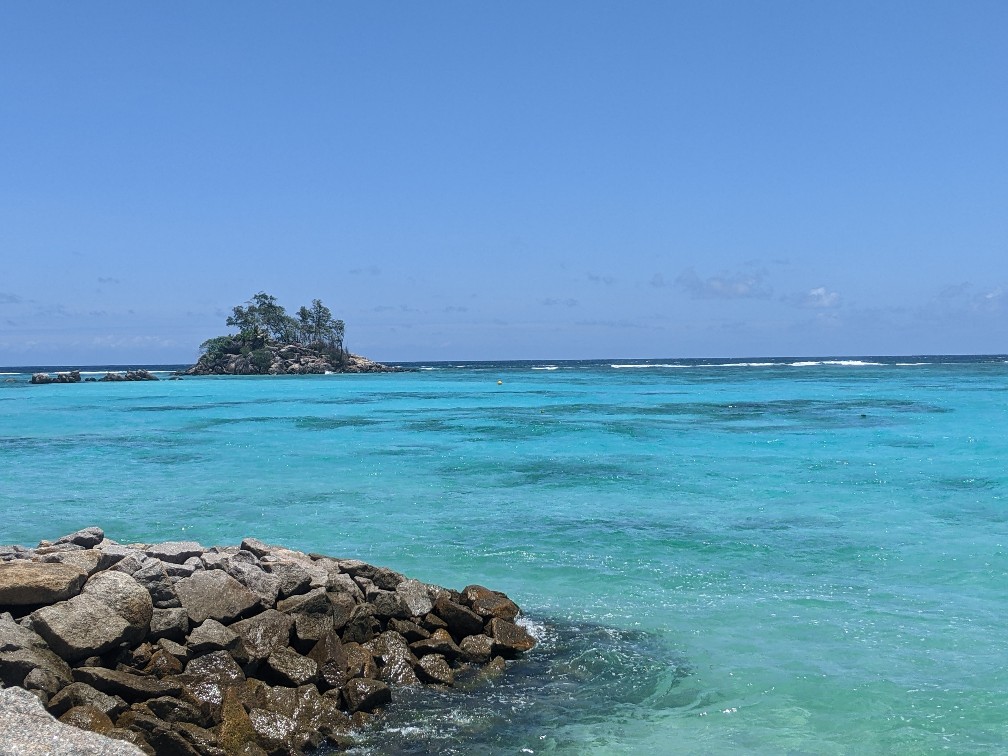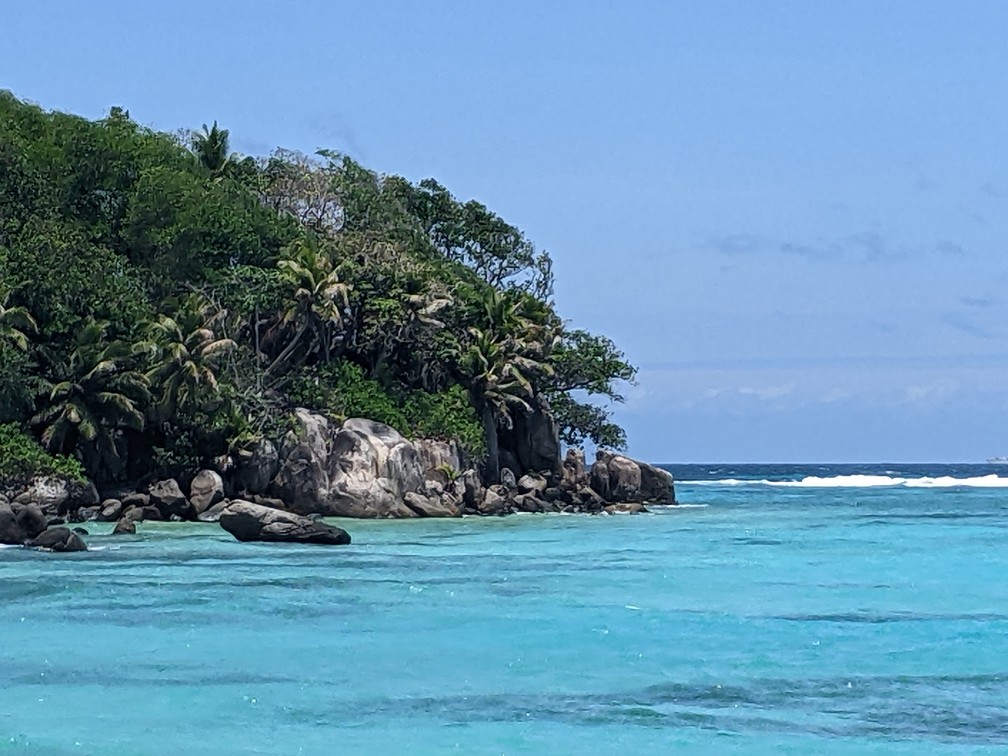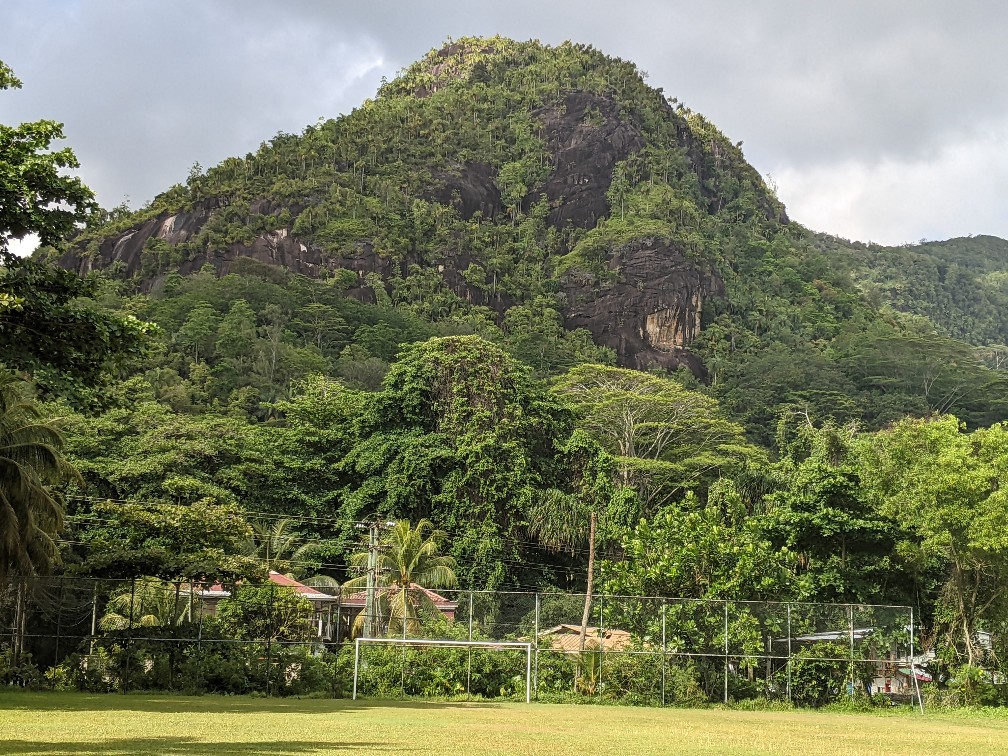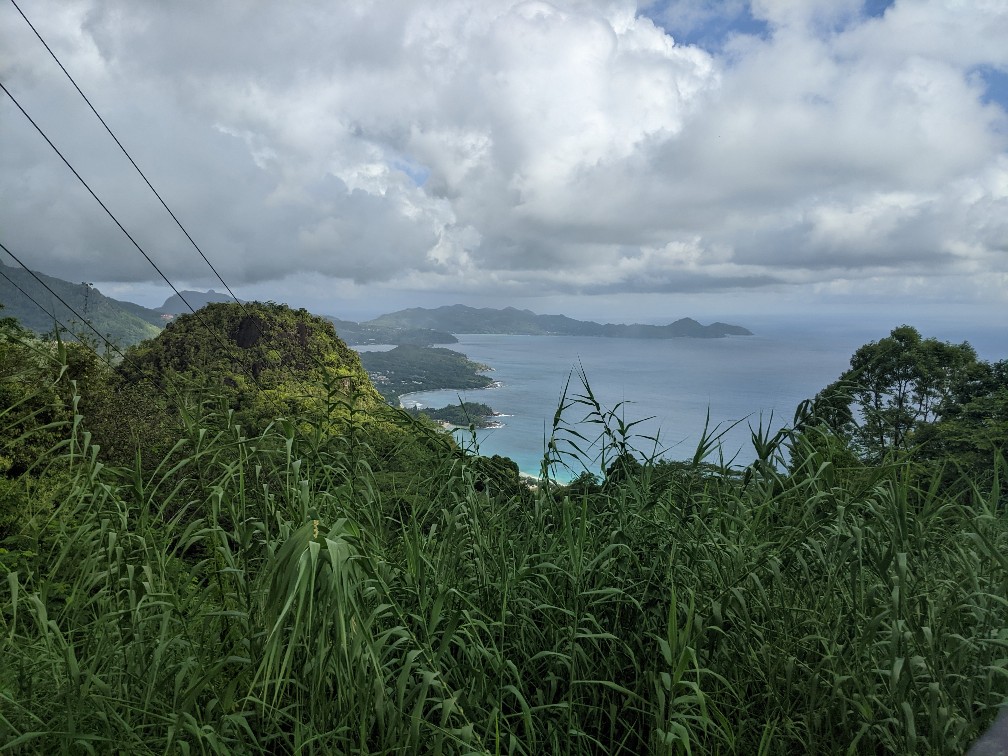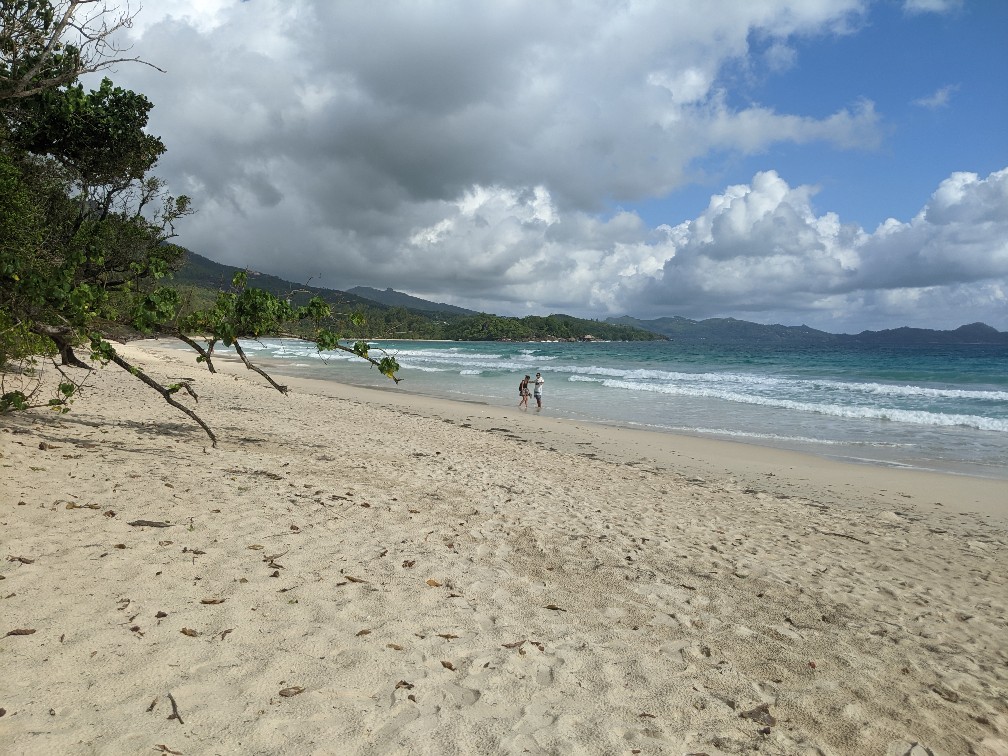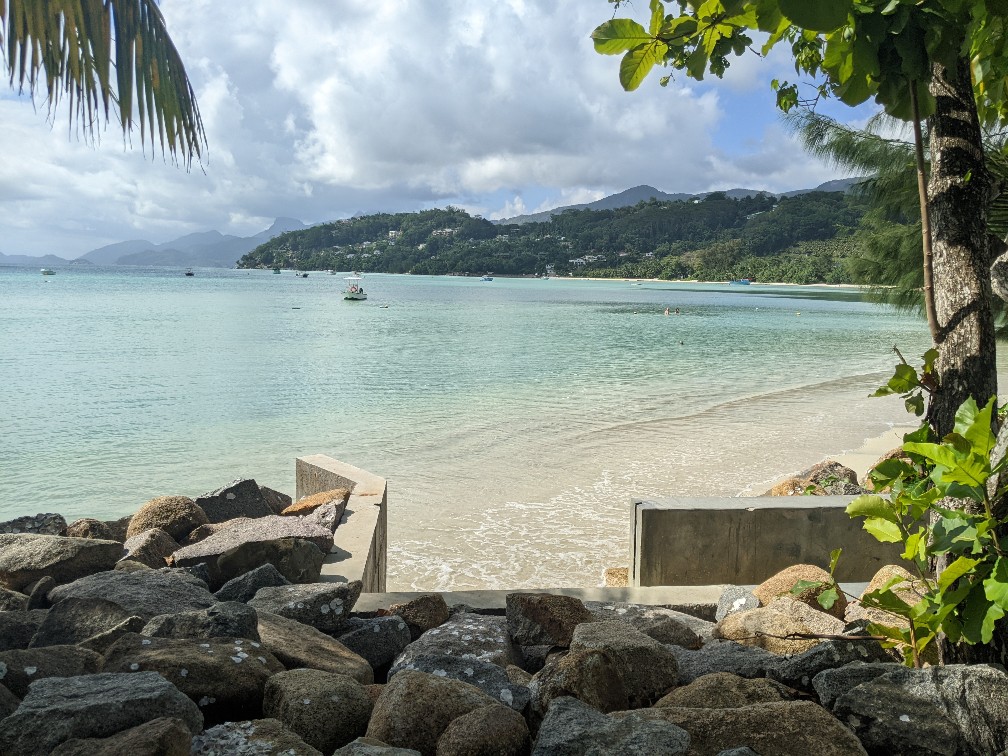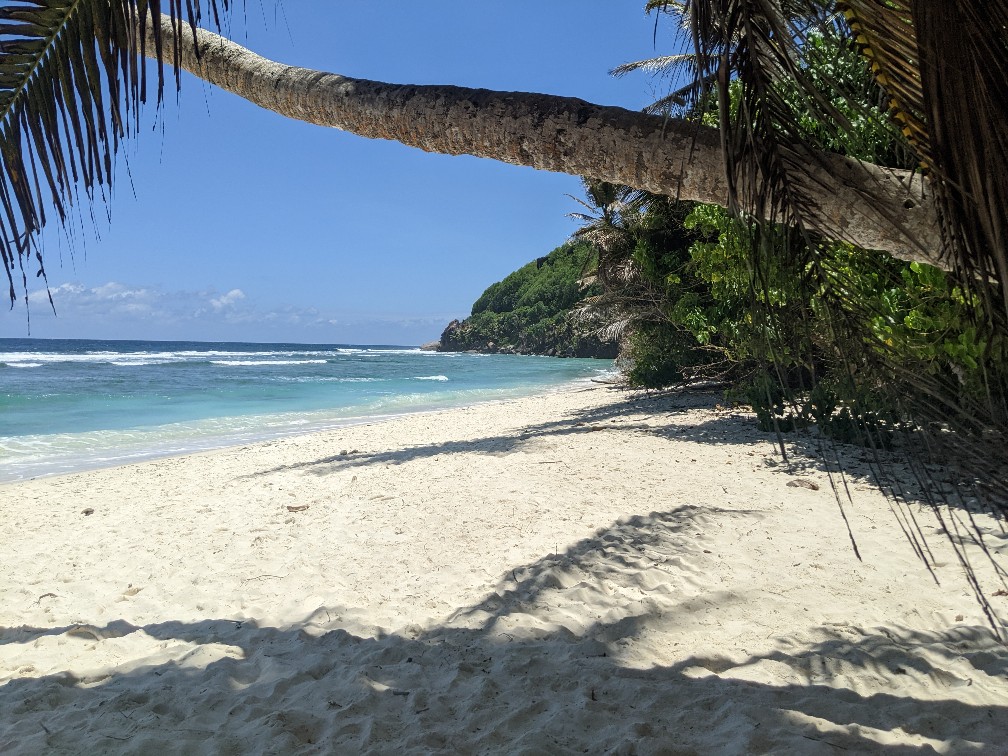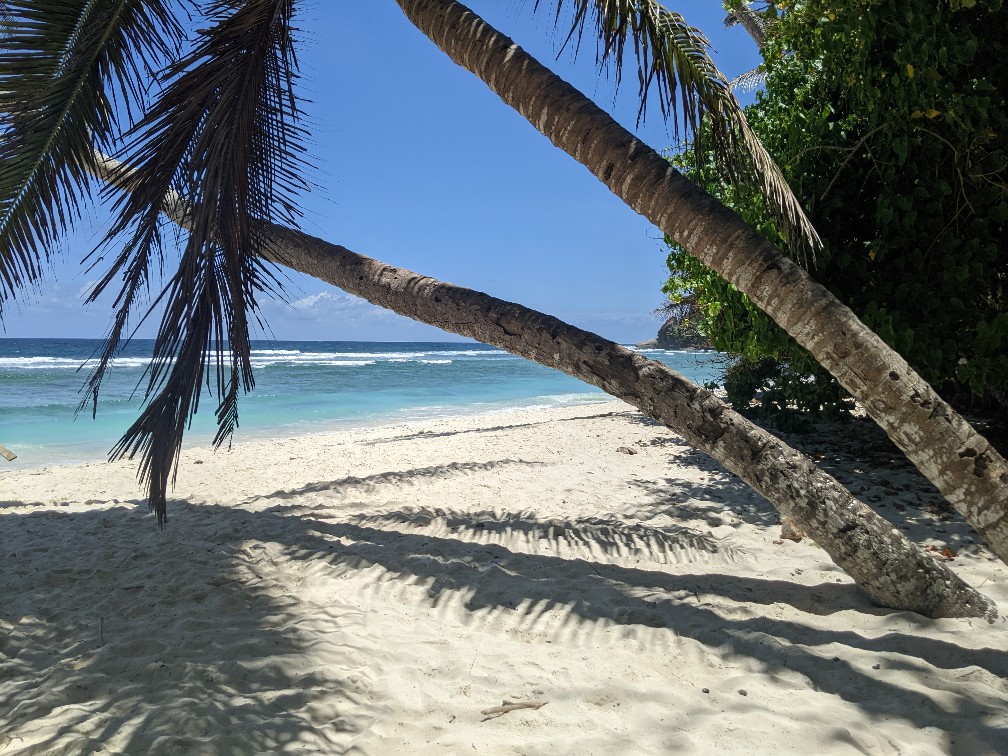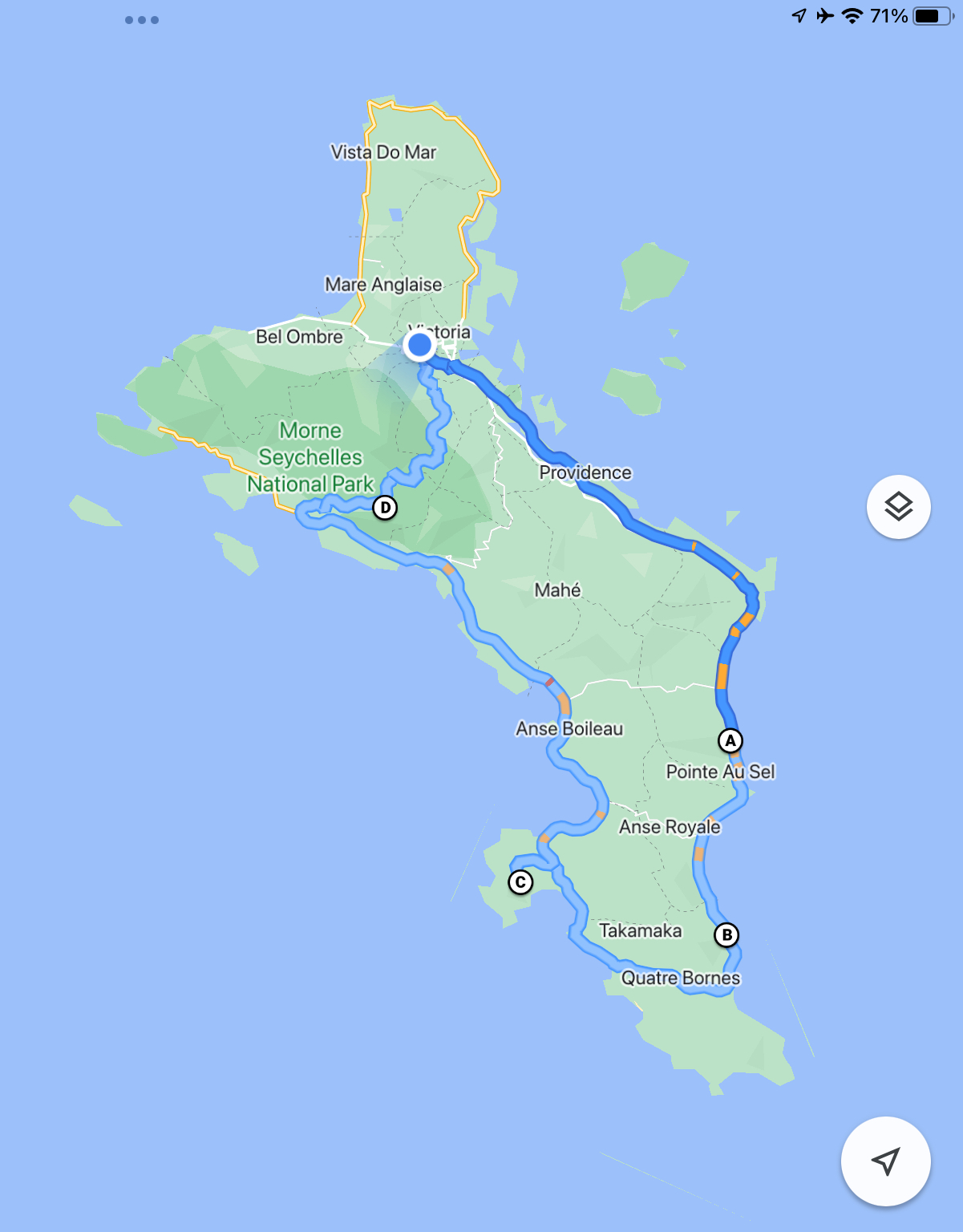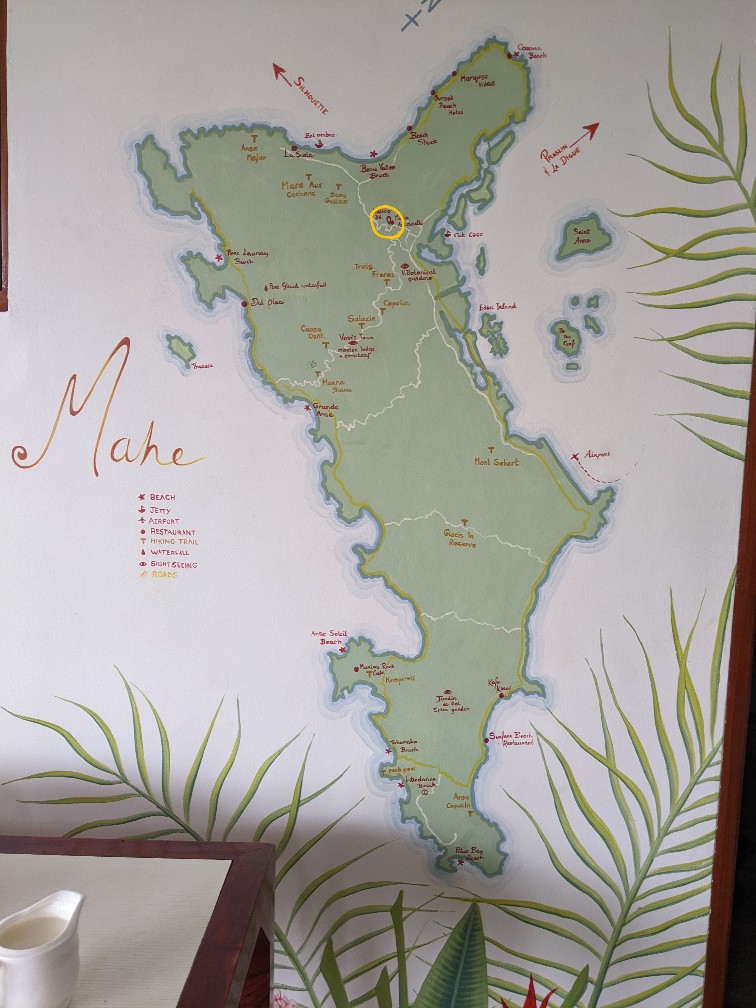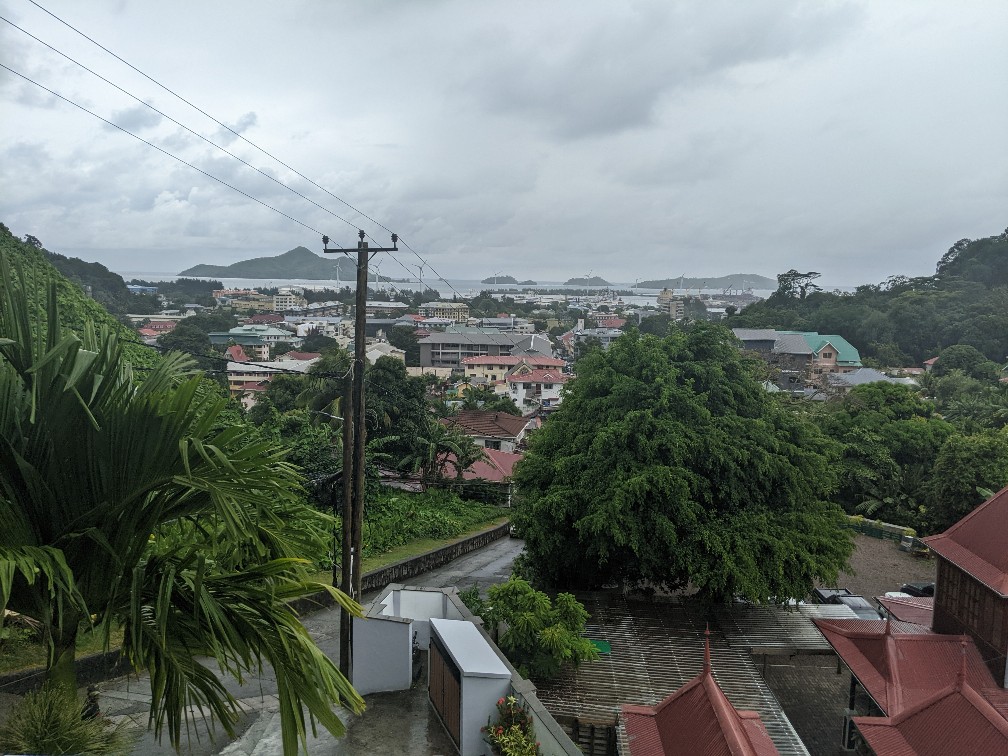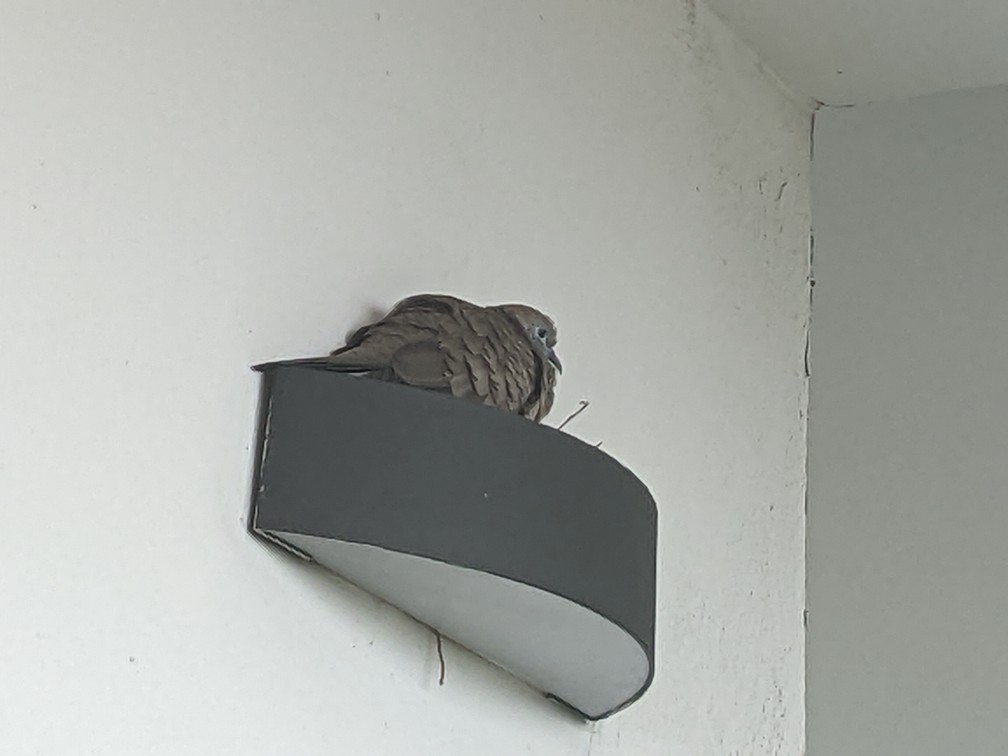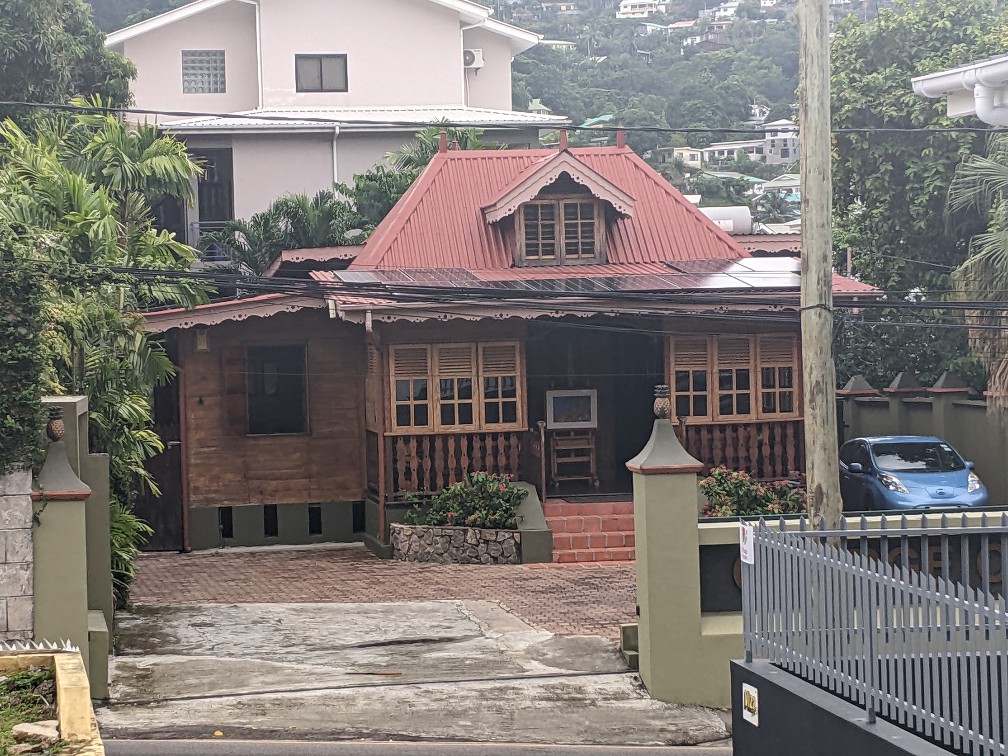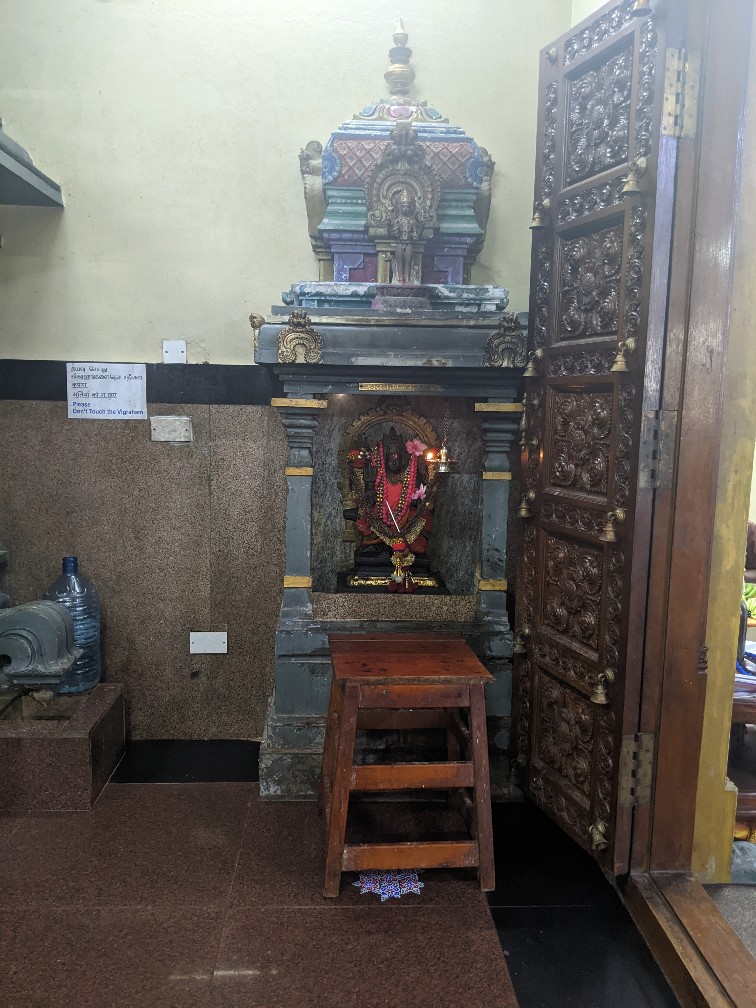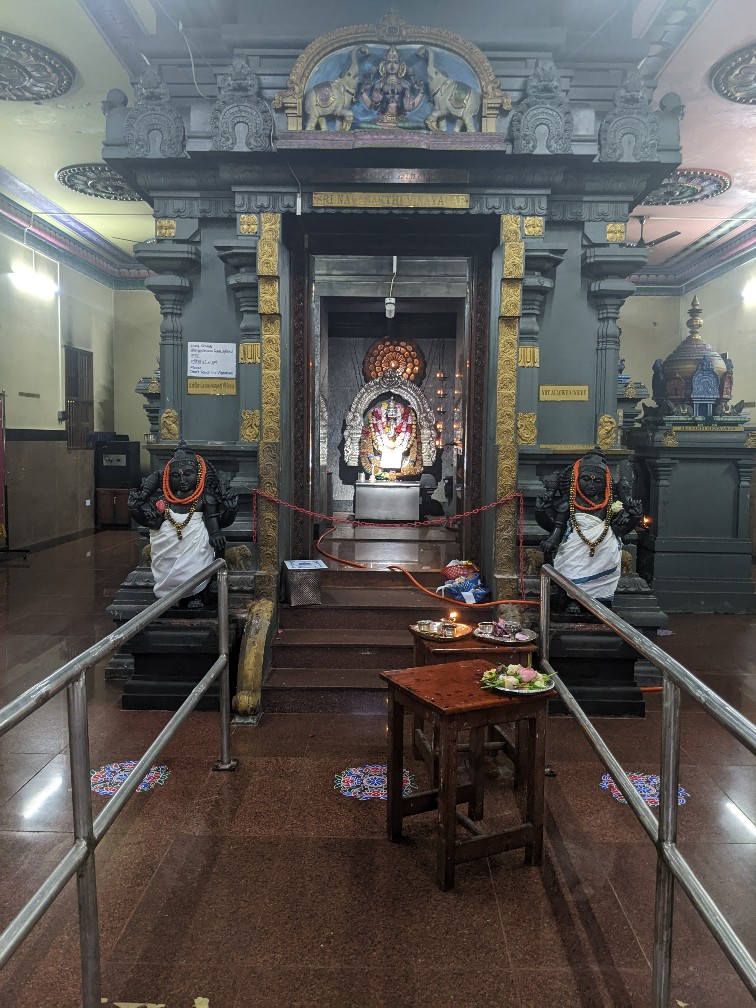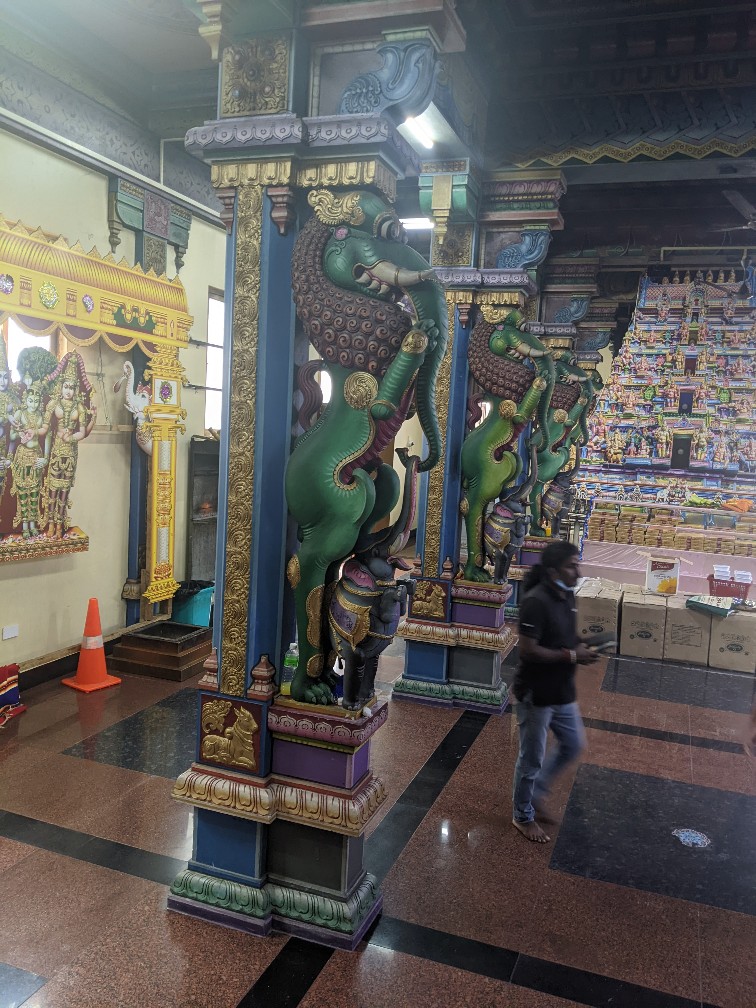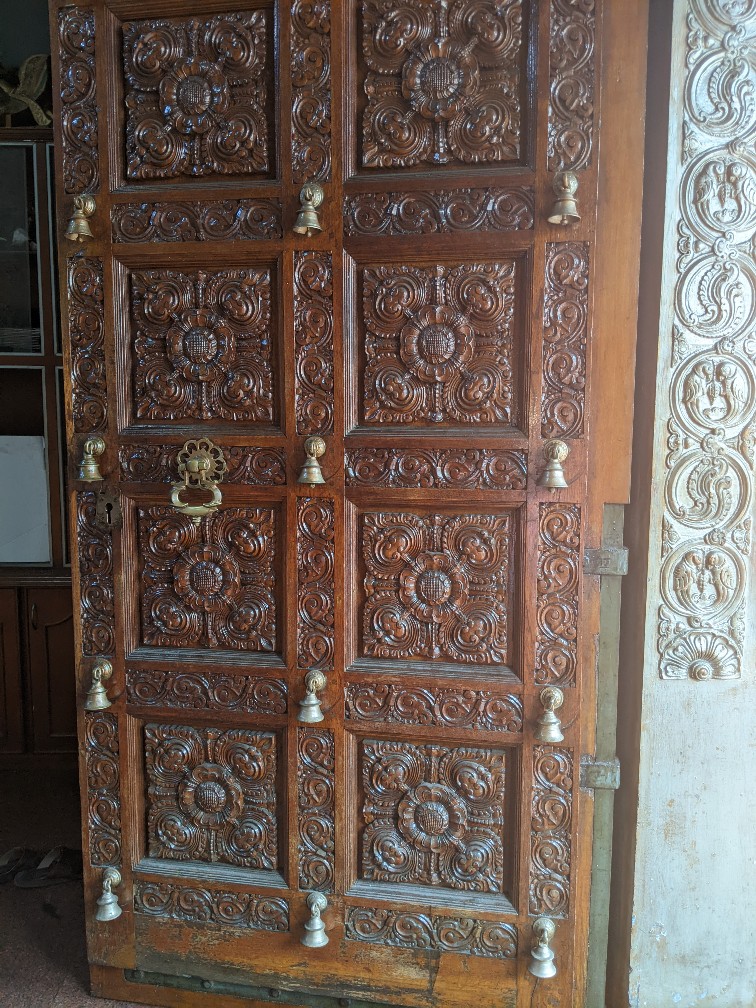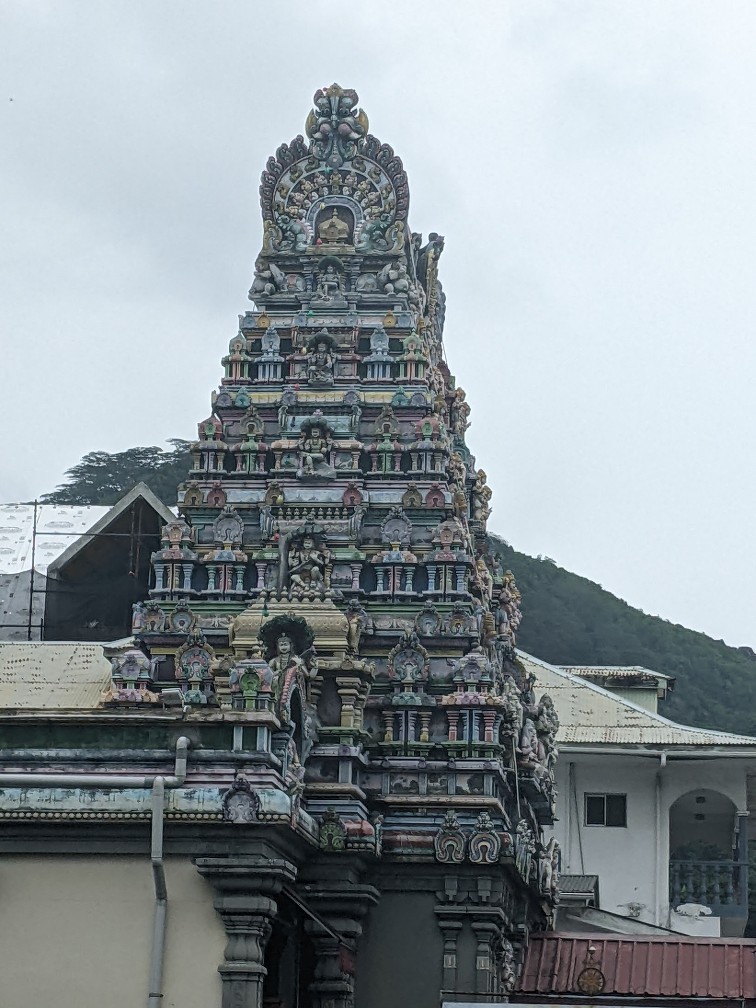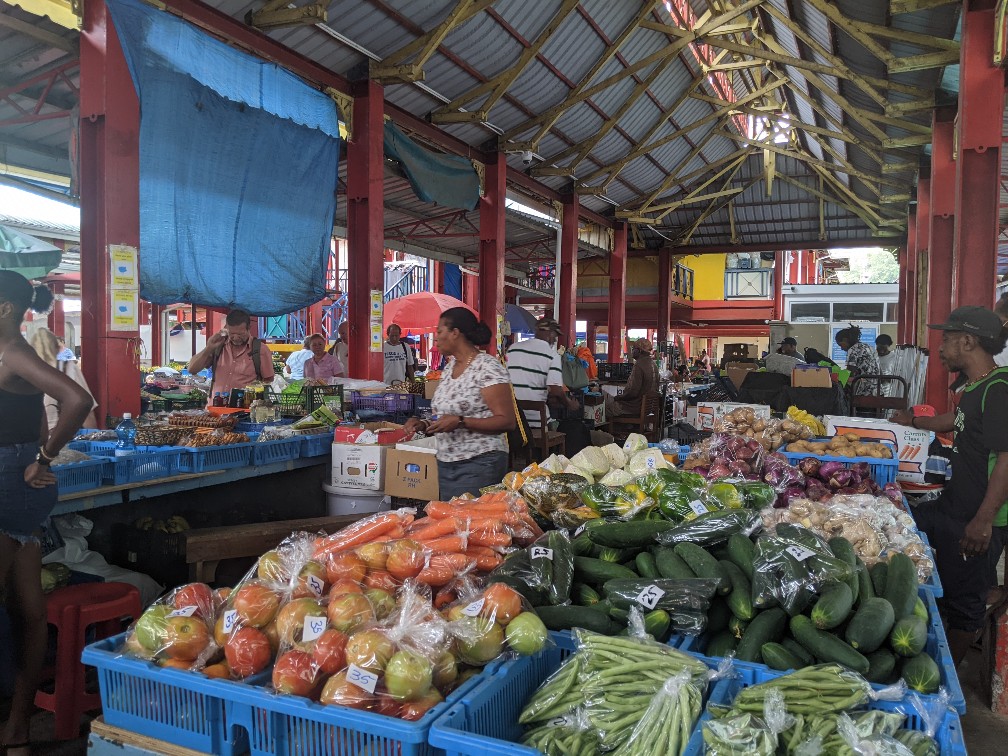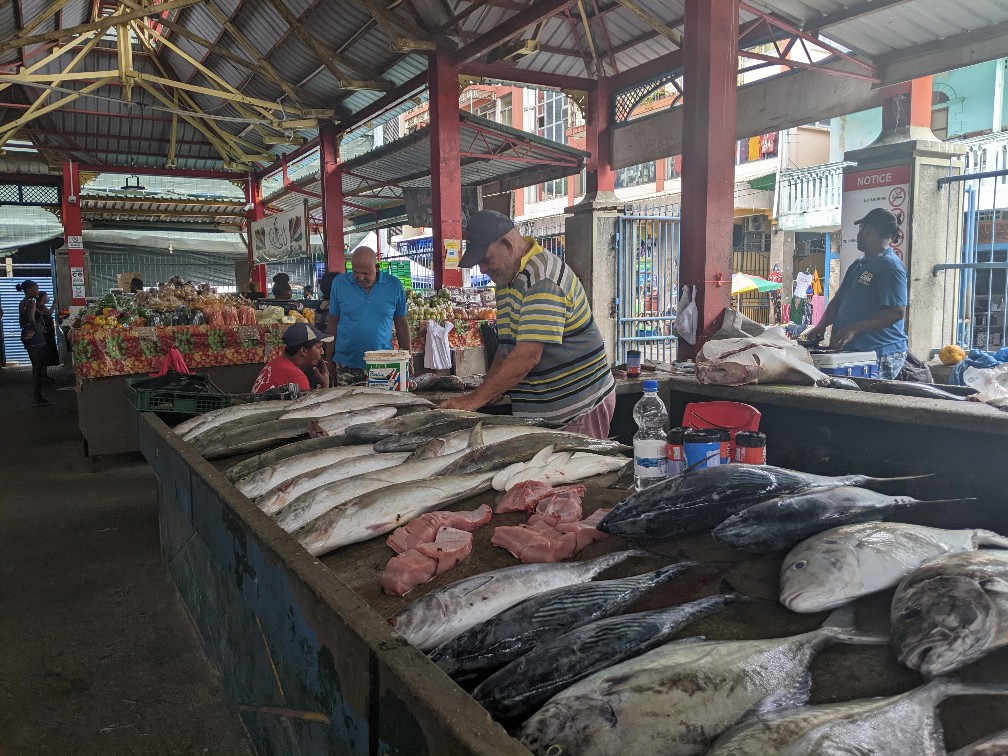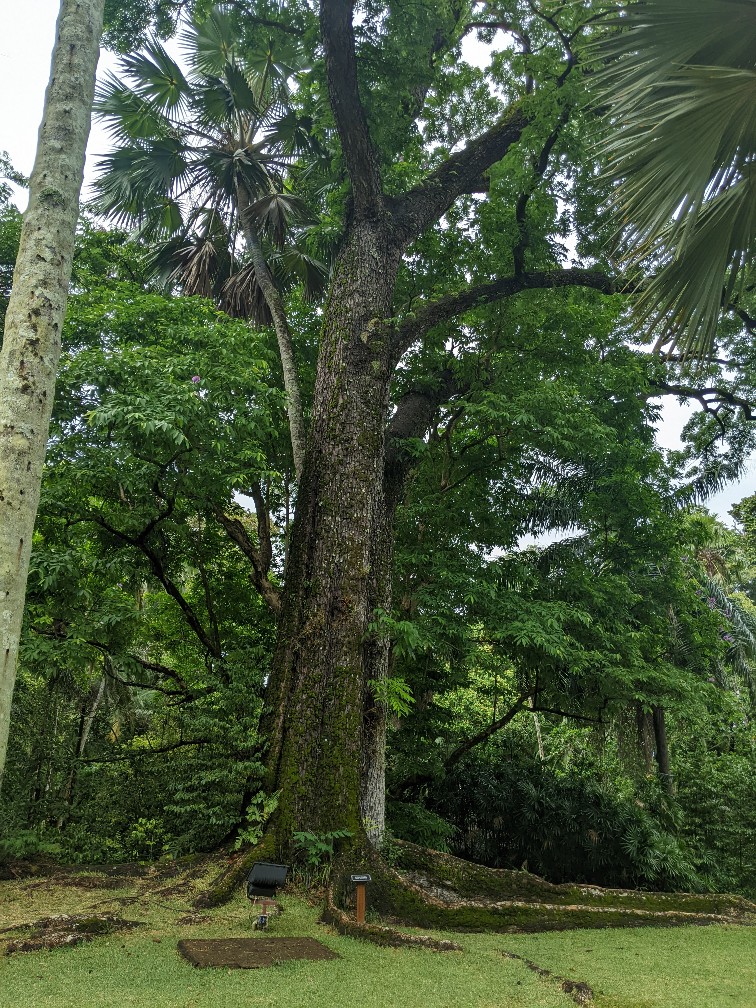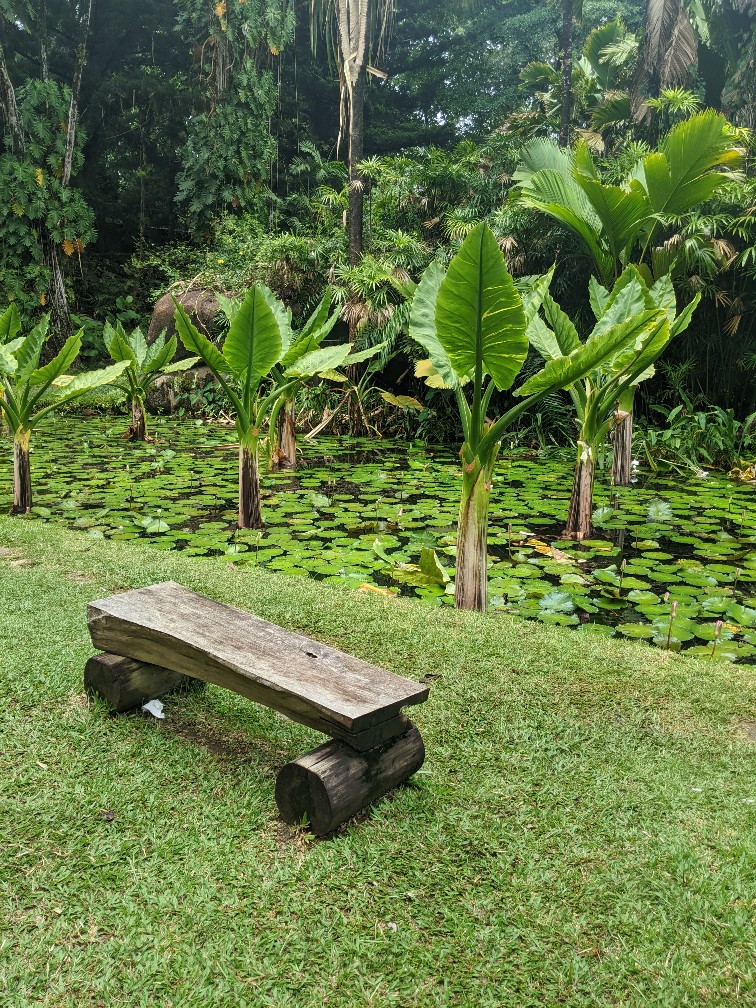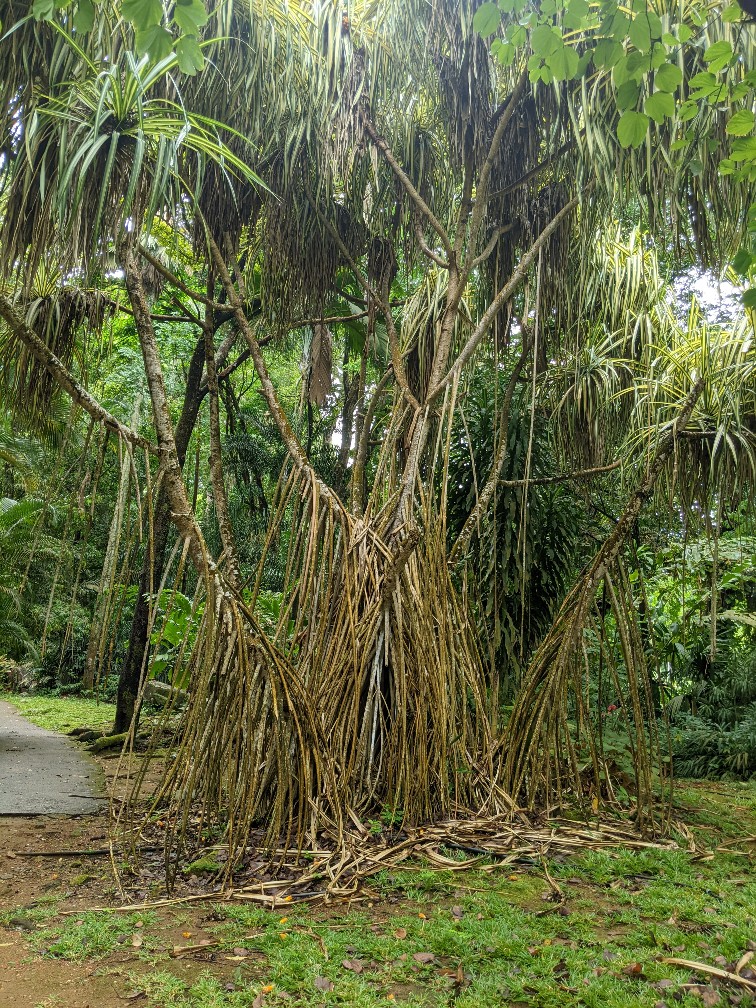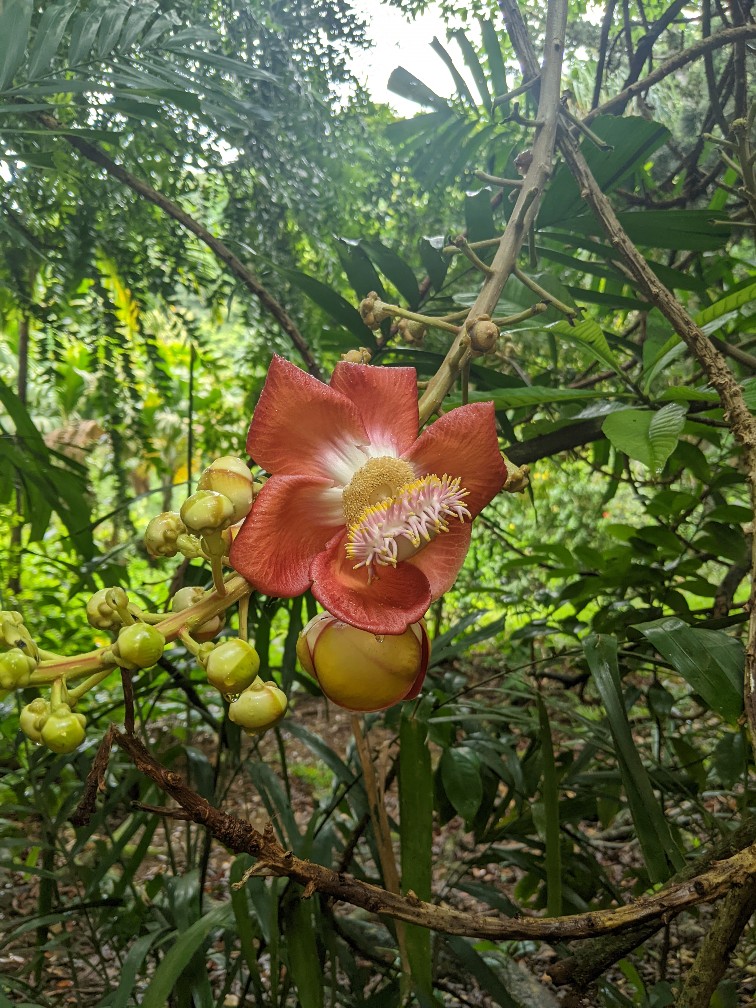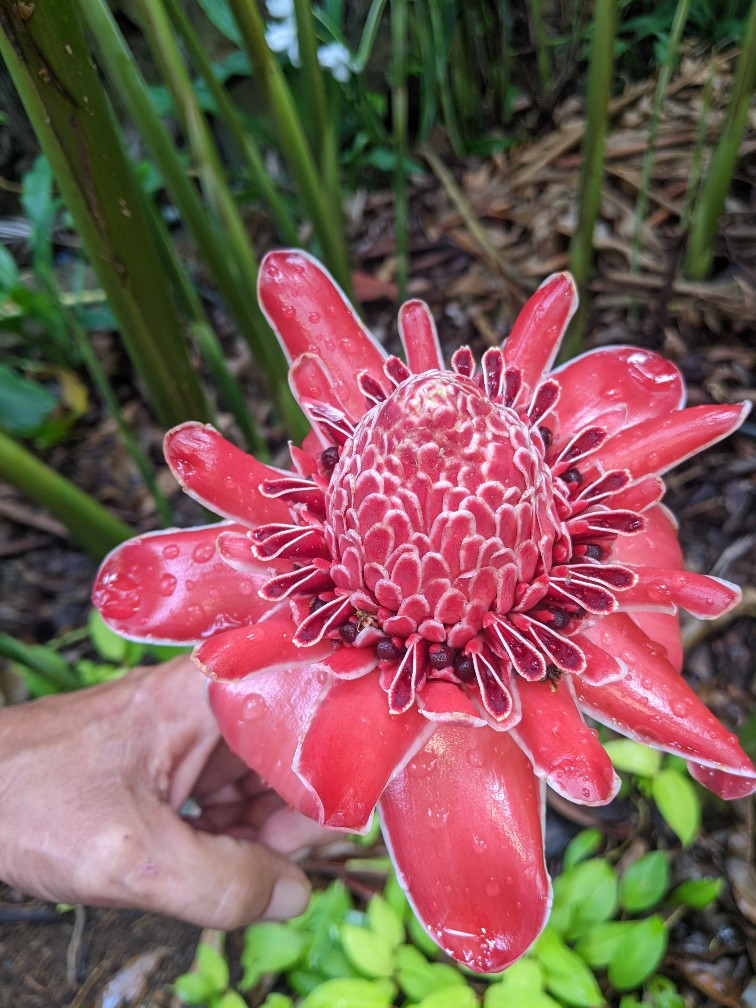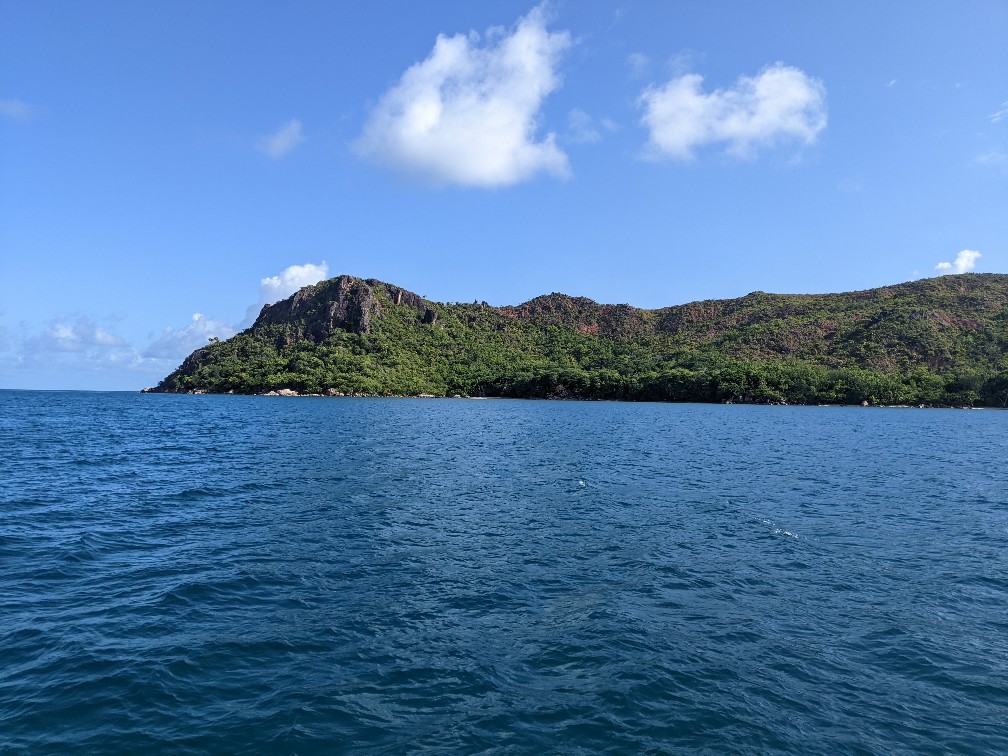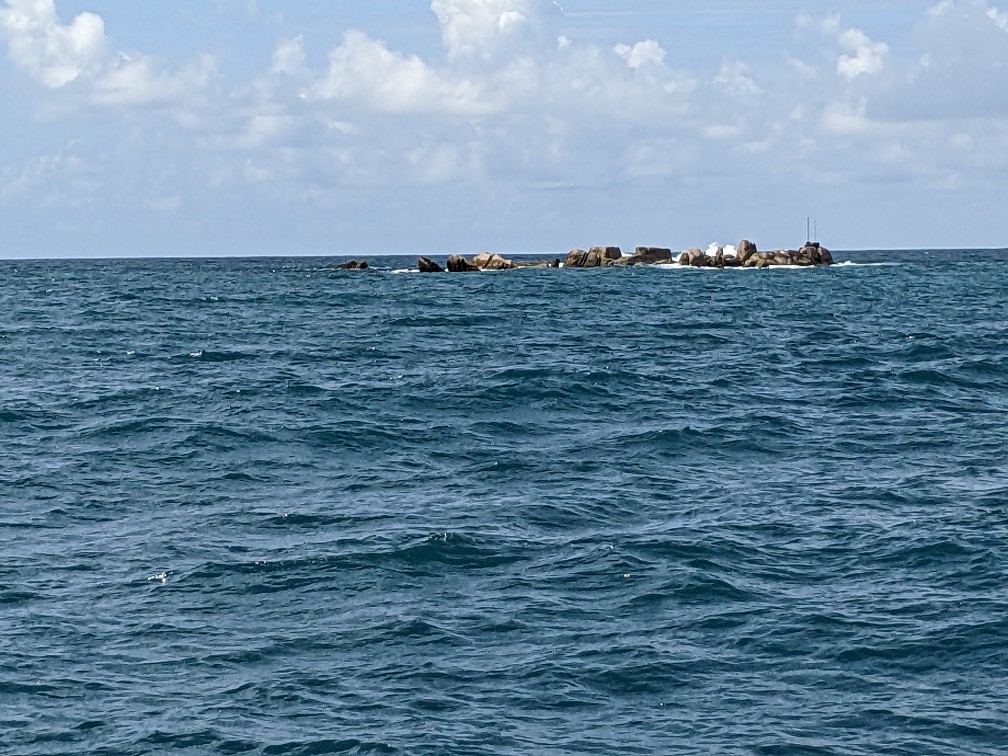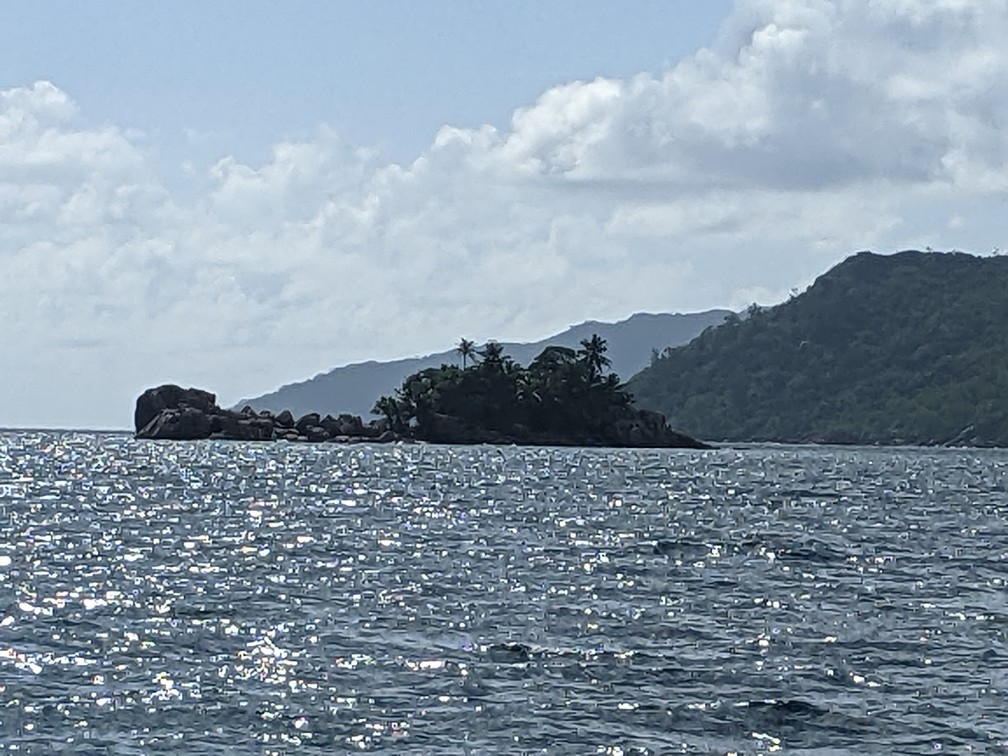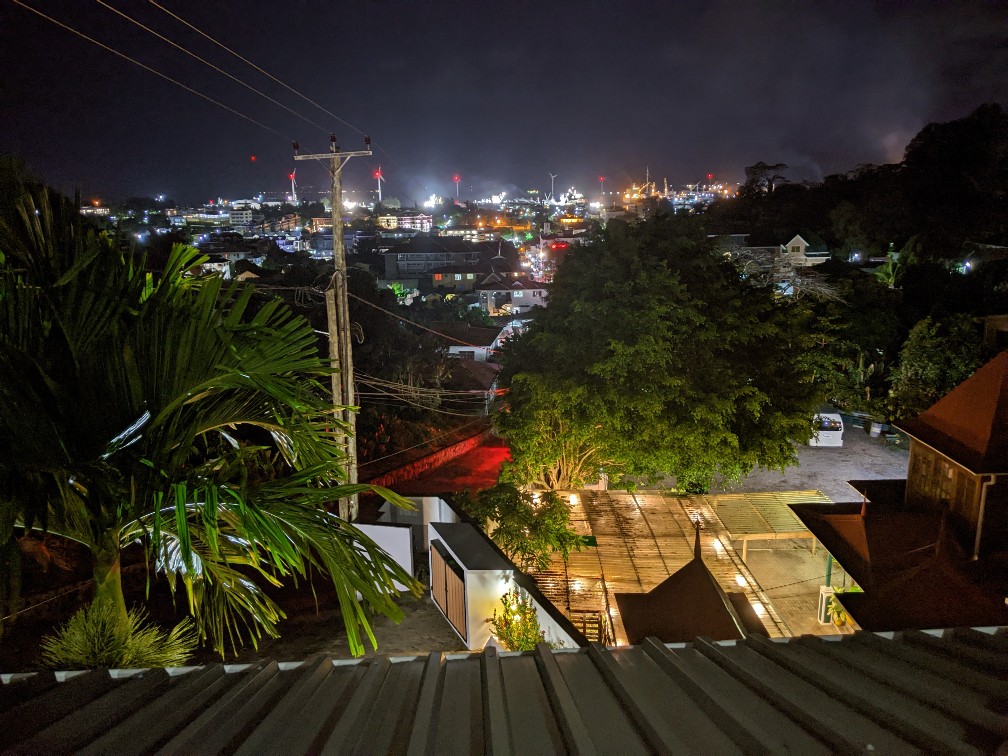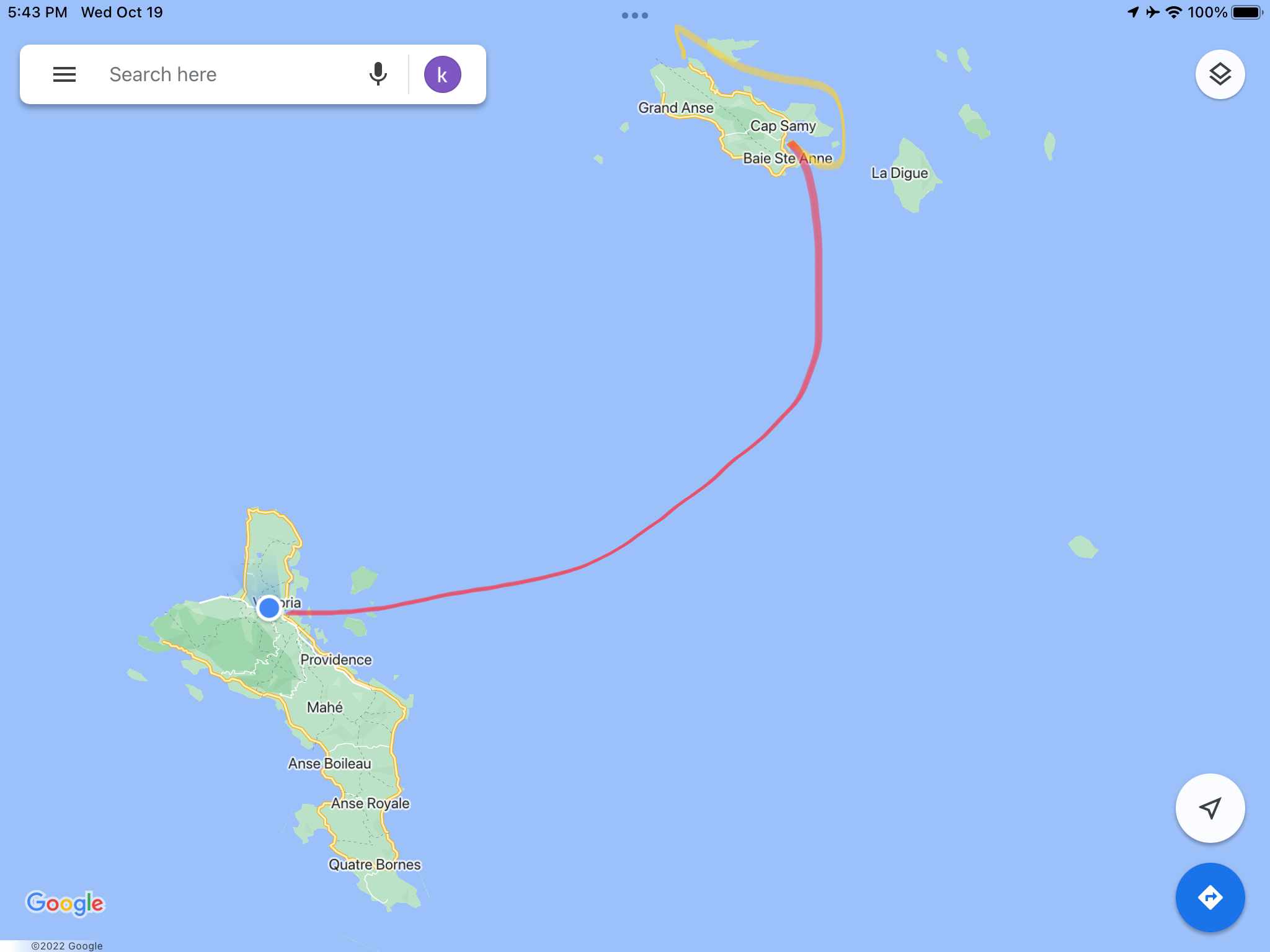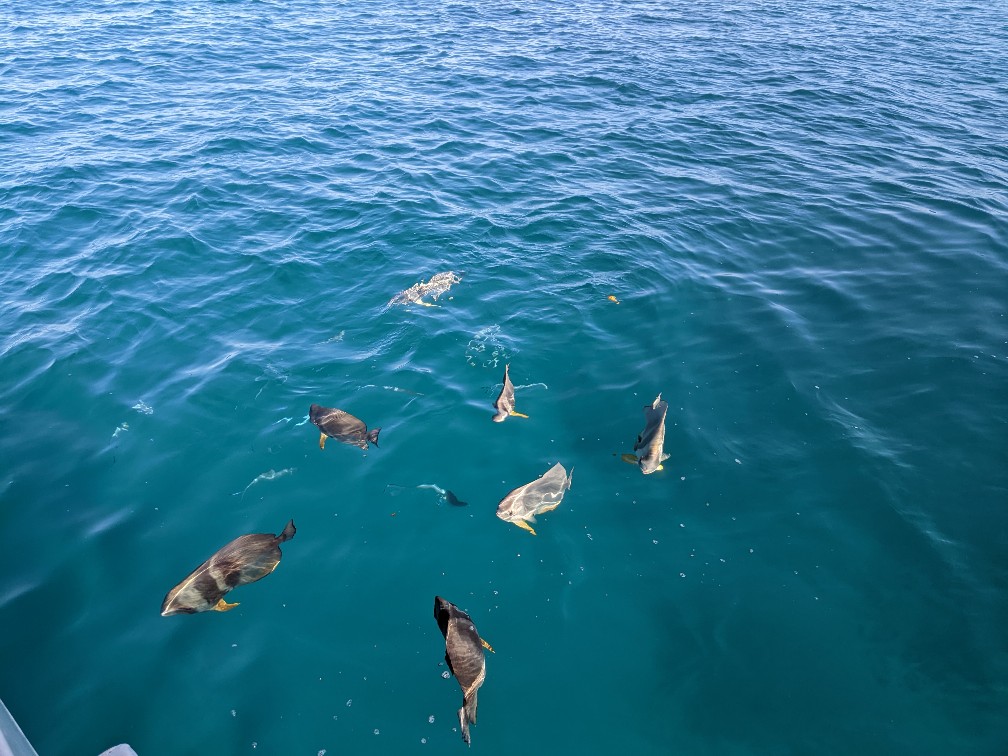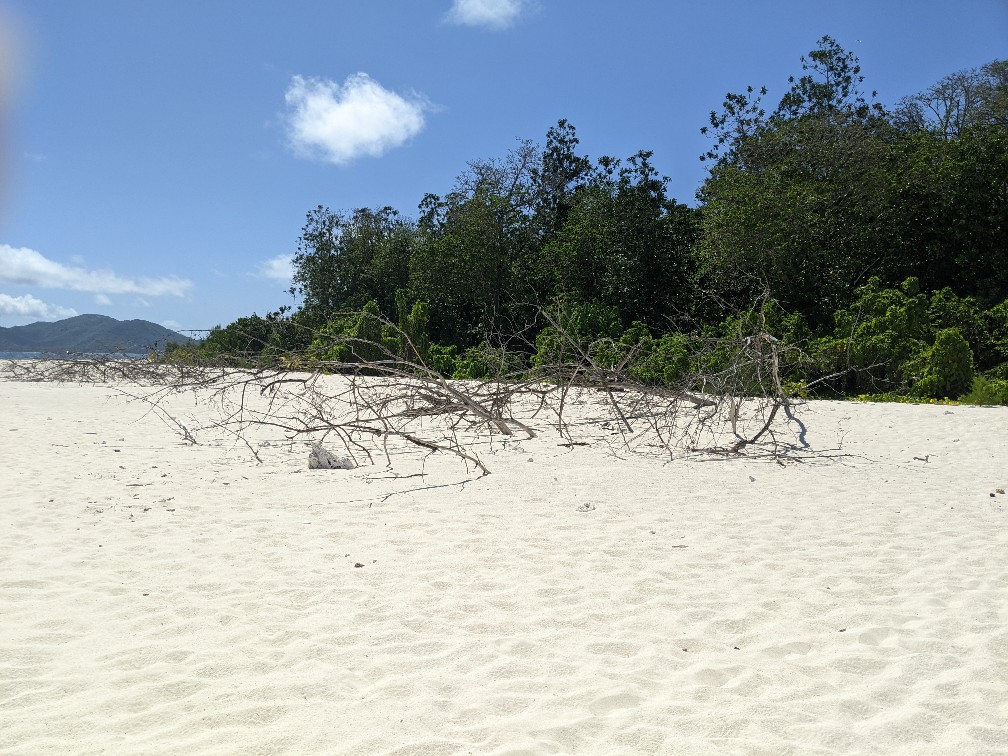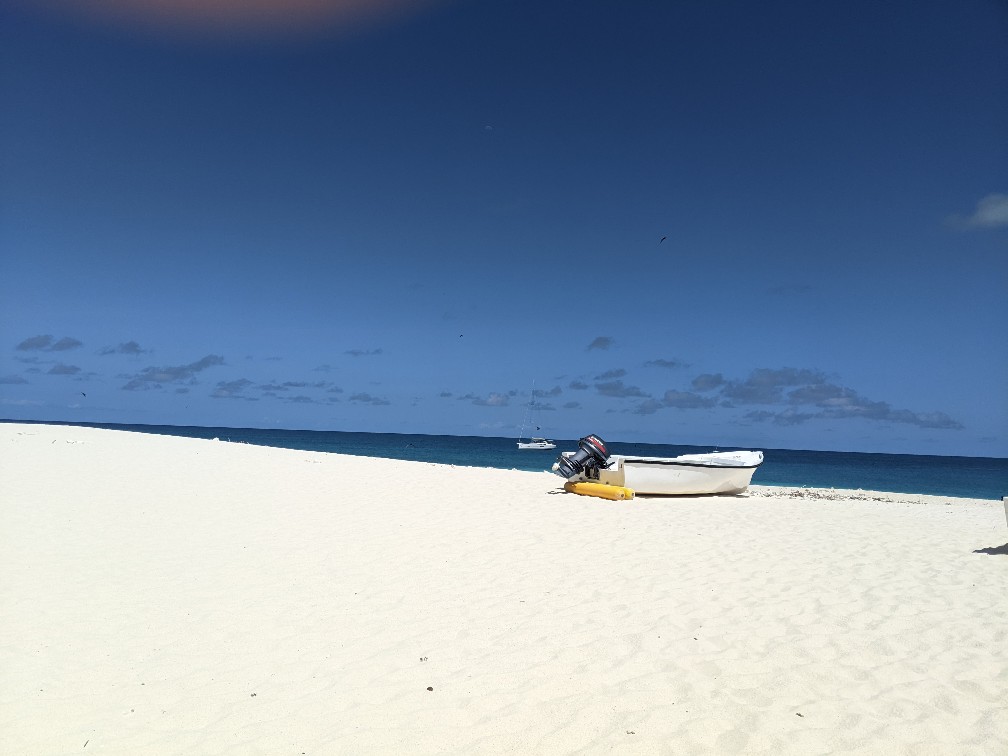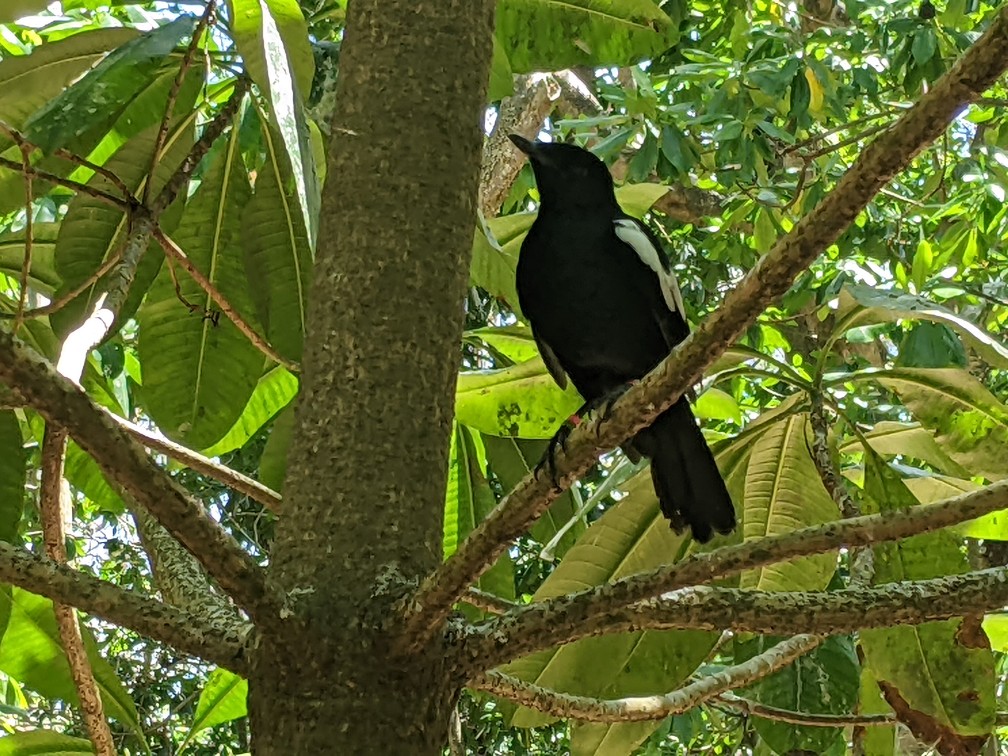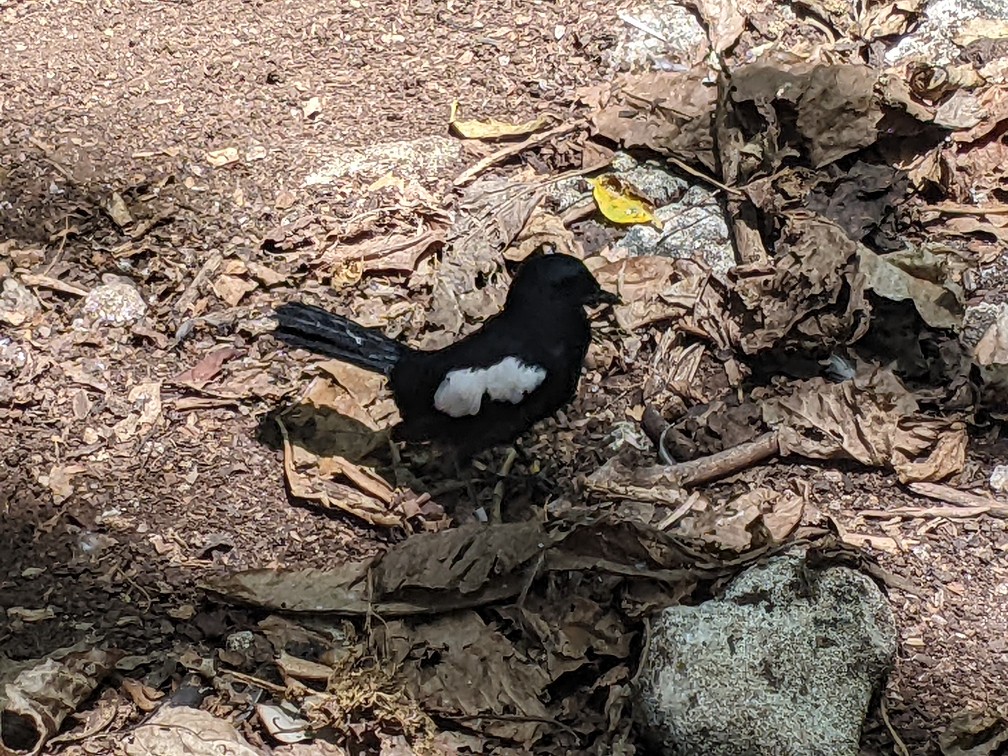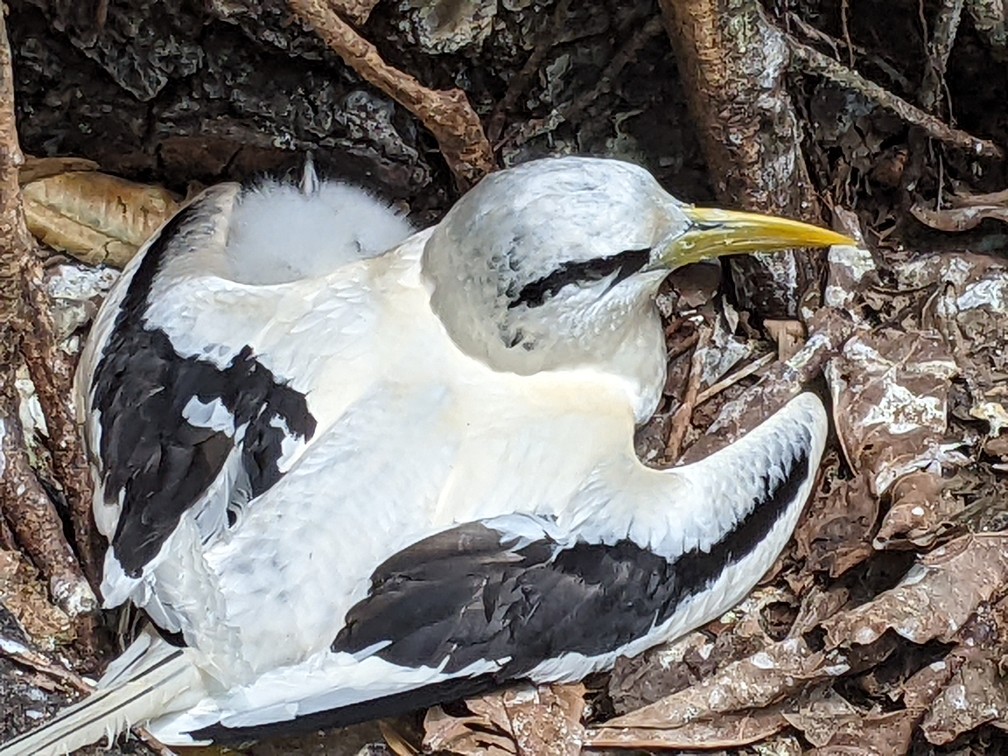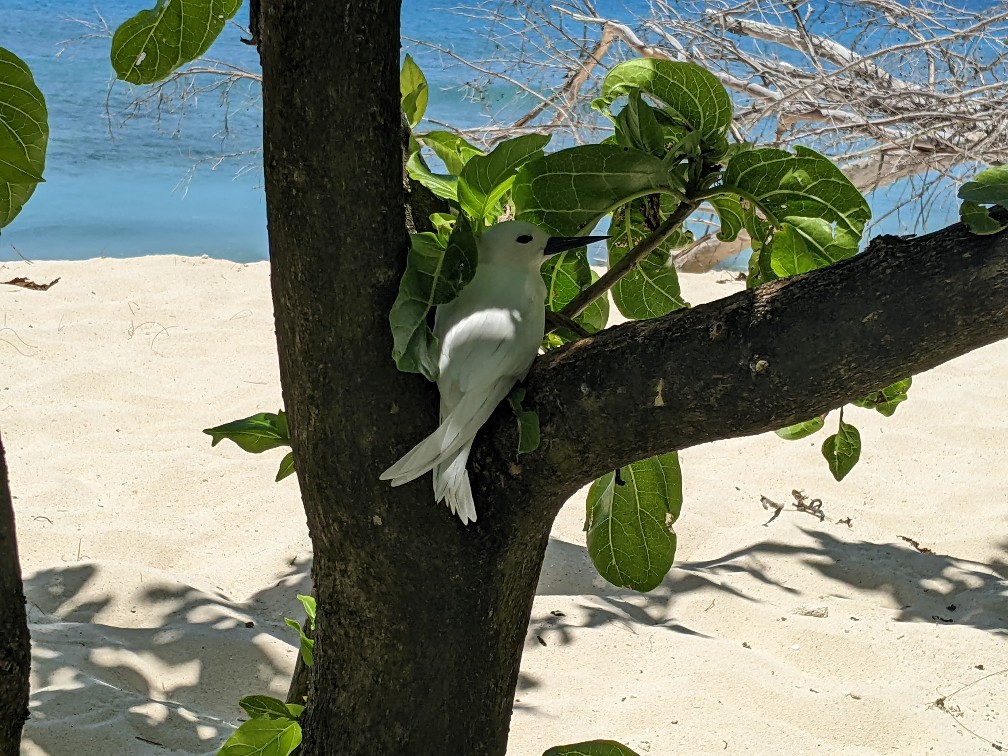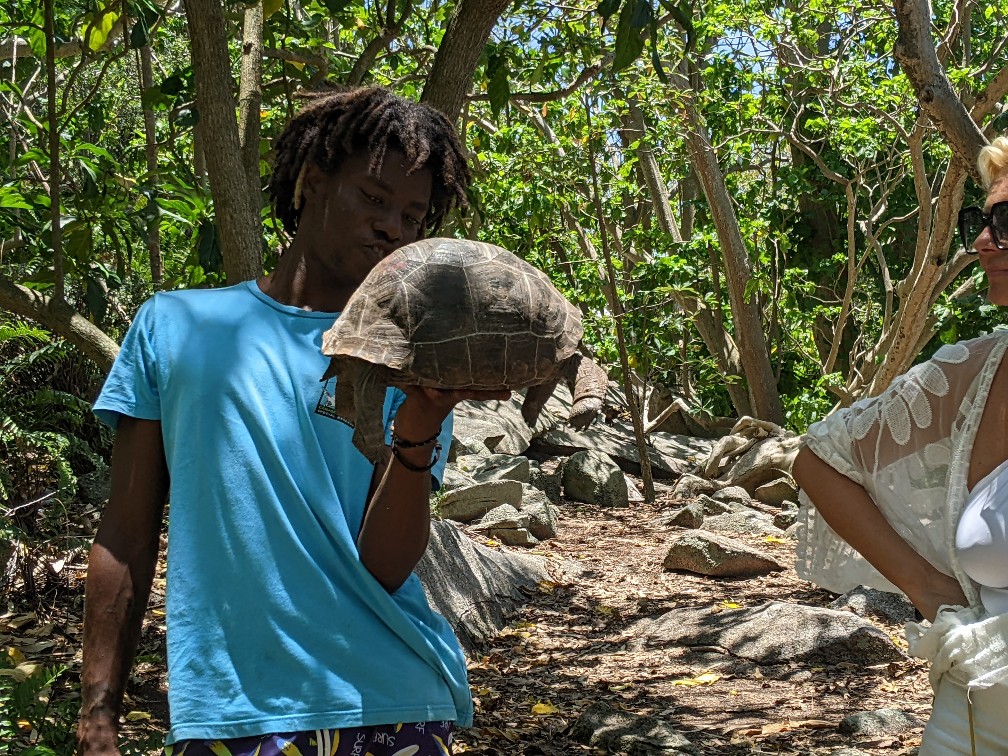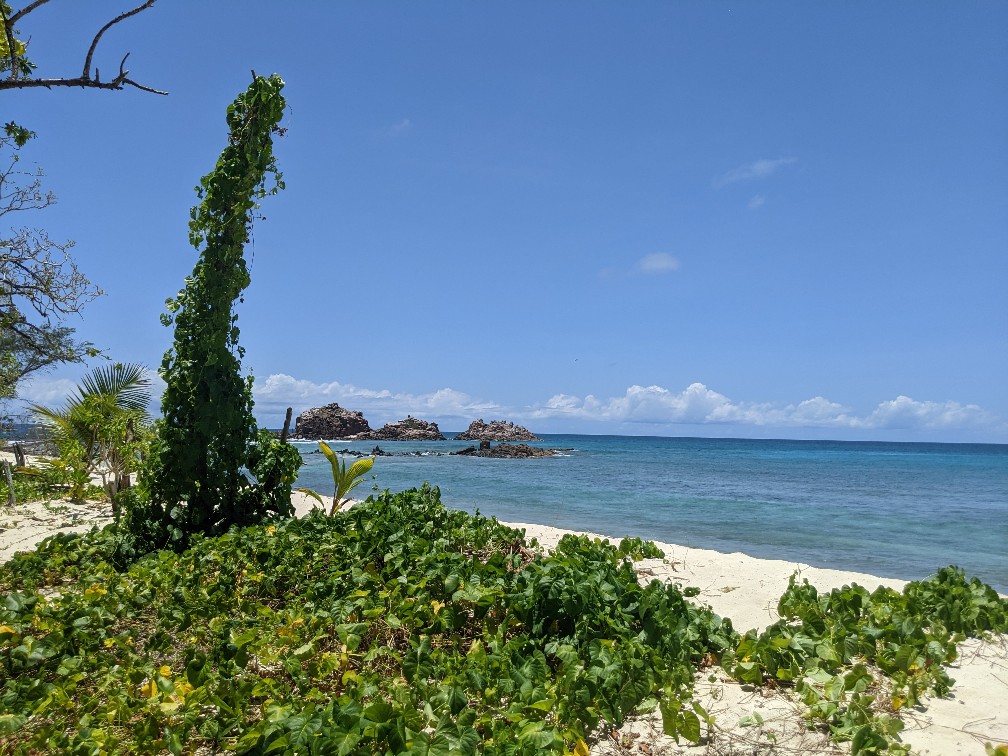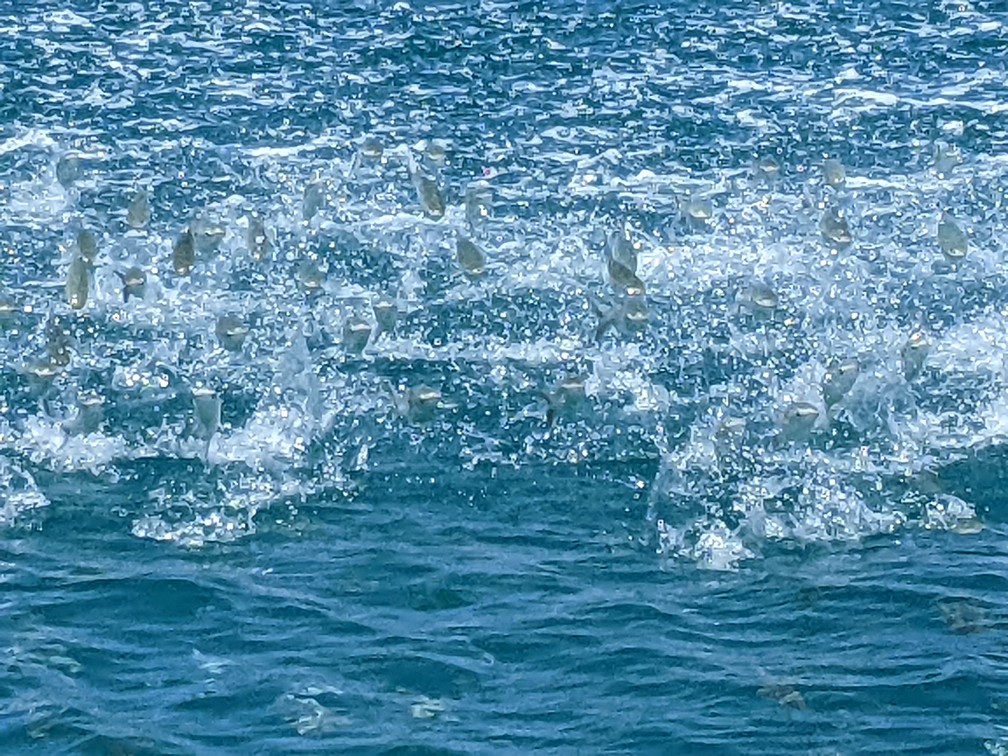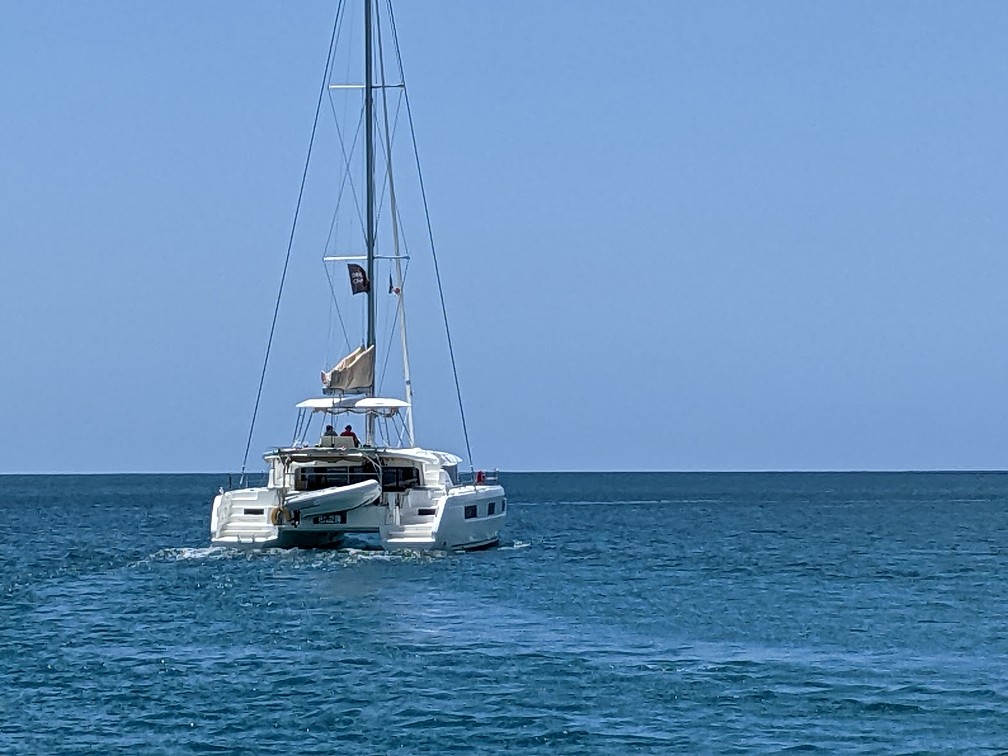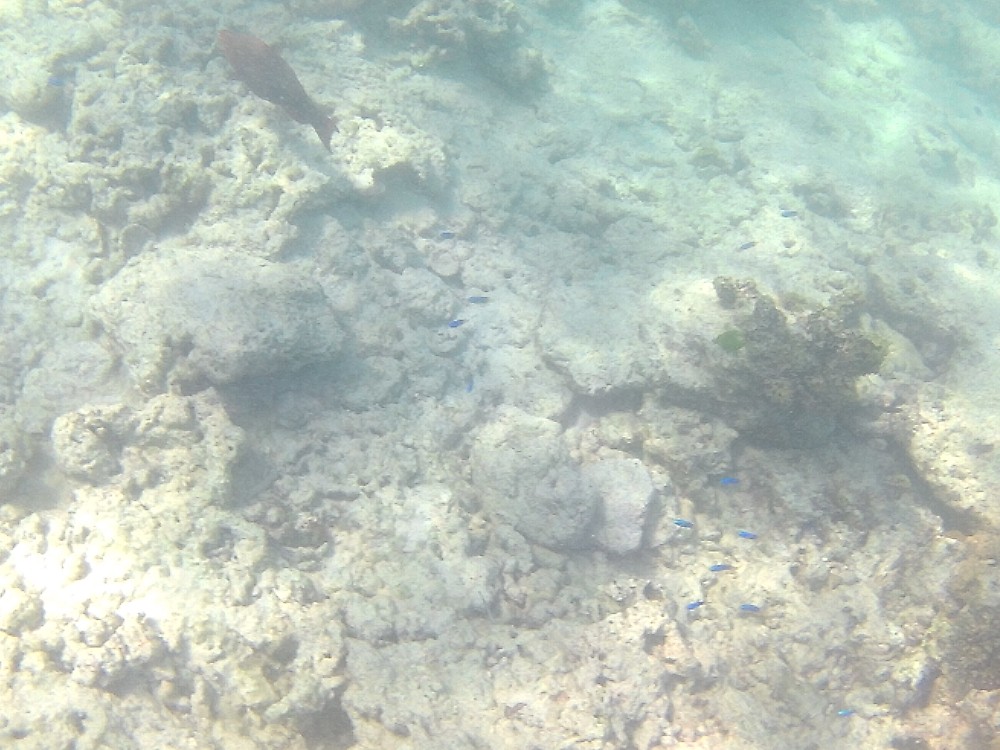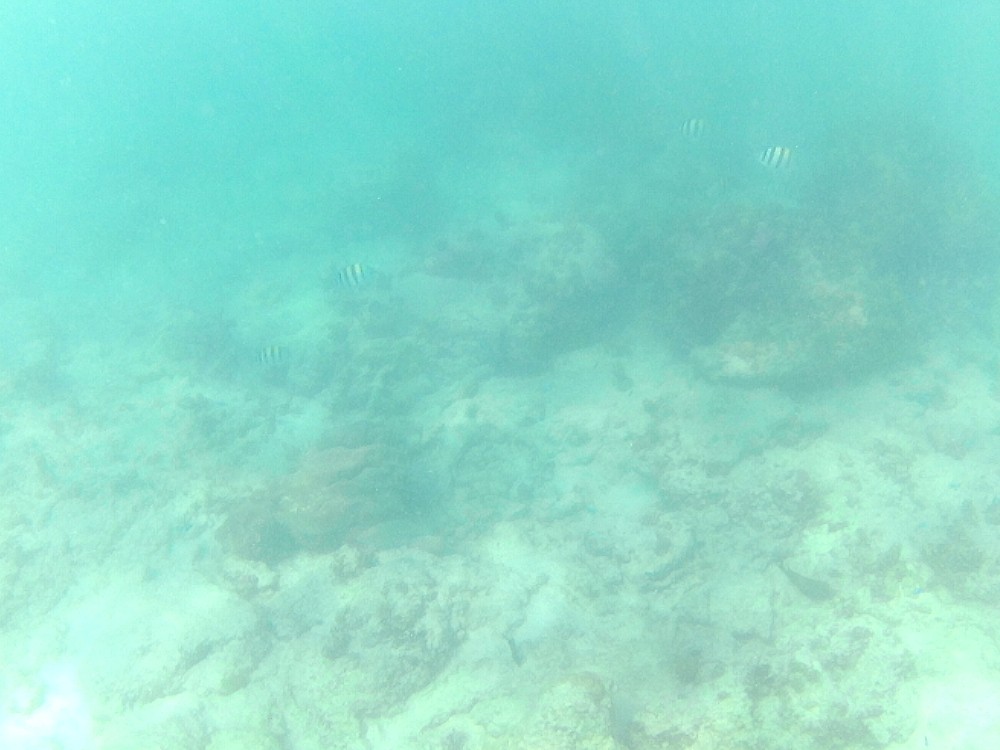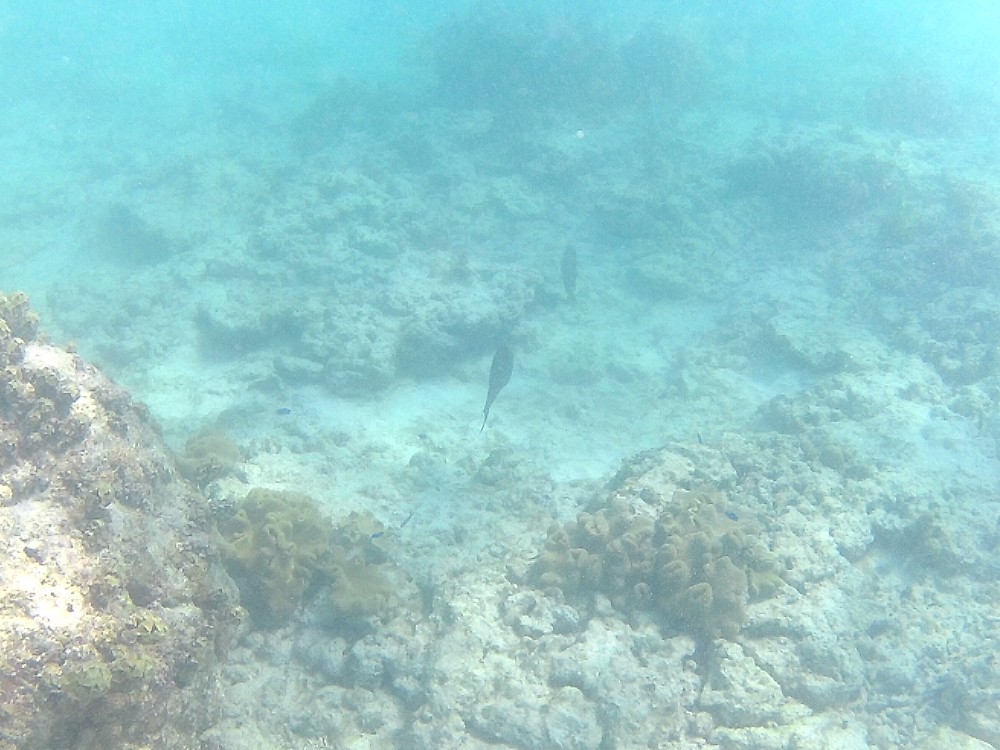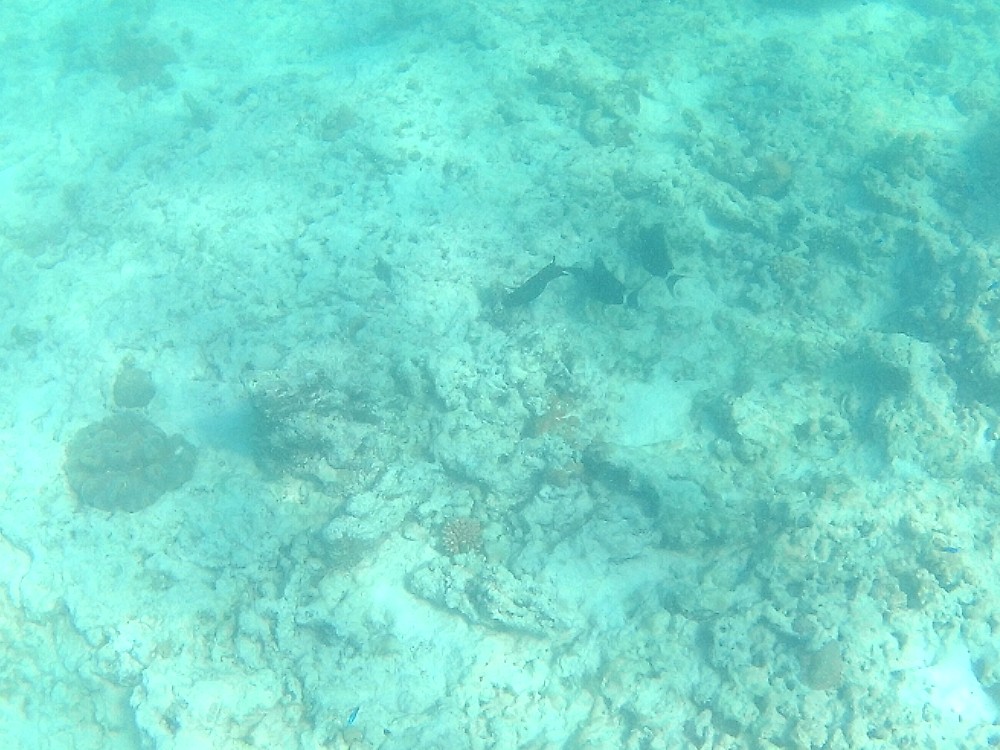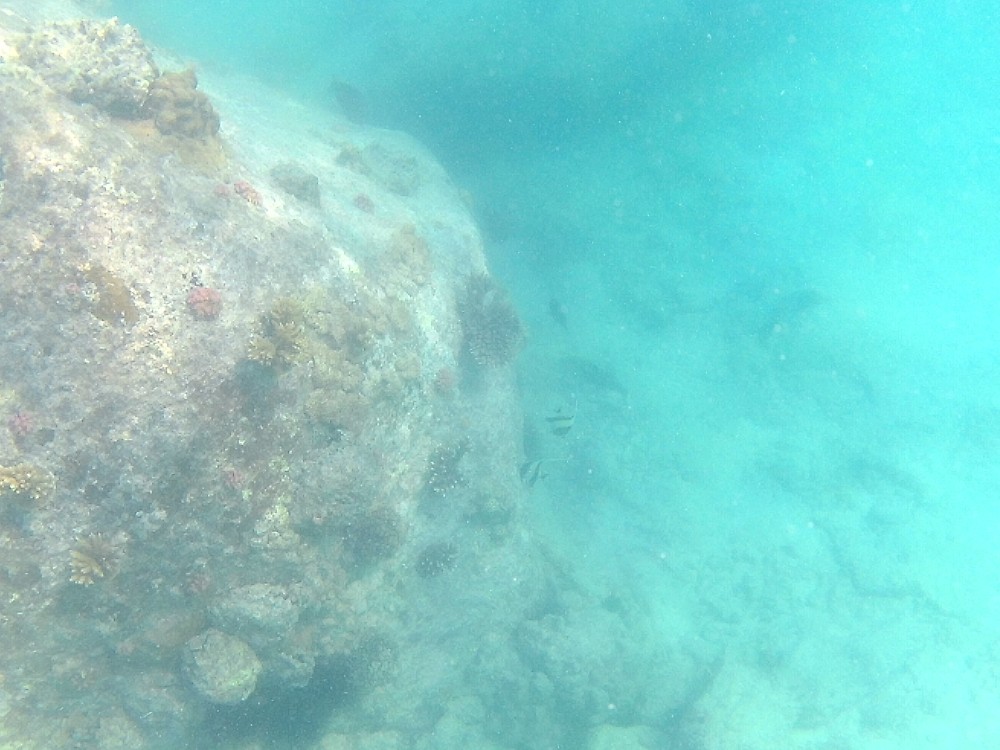Sorry for the delay in posting we haven’t had any access to the internet for four days but we are back on track now.
Today was our last day in Seychelles. While we have enjoyed our time in Seychelles we are excited to move on to the next phase of our trip in Madagascar.
Two things really stood out about the Seychelles. First, of course, it has beautiful beaches and stunning granite boulders. (Unfortunately the natural history museum was closed so I still don’t understand the island’s geology). The second is the friendliness, warmth, and kindness of the Seychellois. Everyone was wonderful!
From a sailing perspective it was not what we had expected. We should have rented a catamaran. Our monohull had a deeper draft (the distance from the water line to the bottom of the keel) than that of a catamaran. The deeper draft limited where we could go and where we could anchor. However, there just aren’t that many good harbors, even for catamarans. On La Digue there was only one anchorage and on Praslin there were three that could accommodate our boat. If we had sailed to Mahe there was only one viable anchorage. Lesson Learned. Even if we had had a catamaran there just aren’t a lot of bays which provide an anchorage calm enough for sleeping. There were a lot of little islands near the three main islands but most of them were private so we couldn’t go ashore and the anchorages were not protected enough against the prevailing winds to spend the night for either a monohull or a catamaran.
The other issue we had with the boat was that it didn’t have a freezer. This meant we either had to go food shopping every couple of days or go to restaurants a lot. When we were on La Digue that wasn’t a problem because there were lots of restaurants and grocery stores close to the dinghy dock. The one bay on Praslin that accommodated our boat had one uninspiring restaurant and no grocery store within walking distance, forcing us to eat on the boat. We like eating on board but we either need a freezer or an accessible grocery store.
We didn’t put up the sails at all. The distances from one island (islands that our charter contract allowed us to visit) to the next was short and it just wasn’t worth putting up the sails. It also seemed that we were always headed right into the wind or sailing directly downwind. None of the other boats that we passed had their sails up either. So most people didn’t think it was worth hassling with the sails for the direction or distances we needed to cover.
On a positive note we really enjoyed our tours at Vallee de Mai, Cousin bird sanctuary, and our visit to Curieuse Island.
In summary, I’d say the Seychelles is a good vacation spot if you want to lay on a beach and relax. If you want to sail definitely get a catamaran and plan for one to two weeks unless you want to sail to Mahe.
We flew from Victoria in the Seychelles to Reunion and then on to Antananarivo (shortened to Tana), the capital of Madagacar. The flights were uneventful except that on our second flight there was a family sitting in front of us with an autistic child. His behavior was very similar to Nathaniel’s so we tried to talk to them about Fragile X. They didn’t speak English so we used google translate on my phone and communicated by passing the phone back and forth. I’m not sure they ever understood what we were trying to say.
The international terminal in Madagascar was quite nice and we were met by our tour company’s English speaking guide, Nicolas, and Alexander, our driver. They took us to our hotel.
Unfortunately I couldn’t take pictures through the van’s windows so I will try to describe the scenery from the airport to our hotel. Initially we drove through rice fields as rice is very important in the Malagasy diet. The fields were split into small paddies and Nicholas said that if the weather is good they can get three harvests per year. Families can not produce enough rice in these small paddies and usually need to supplement their yield with purchased rice. In many fields laundry had been laid out to dry. In others, zebu, cows with a hump between their shoulders which are used to work the fields and as food, grazed. A few paddies had shacks where I think people lived.
Tana is built on a hill. The fields were considered lower town. Up the hill or Midtown is primarily where people live and where our hotel is located. Some of the homes look like something you would see in a slum, some are a little more sturdy. They are very close together and very close to the road. There is a fair amount of liter around. The historical queen’s palace is in upper town. In summary it looks like a typical third world city.
It took us about 30 minutes to get to our hotel which is in the Consulate of Monaco. The hotel is VERY small, only 4 rooms. We had about an hour to explore and get settled. They said that we could go out of the hotel as long as we weren’t flashy, i.e., with jewelry or expensive cameras. We read that there is a fair amount of crime so we decided to play it safe and only go out with our guide. Here are pictures of our street and the view from the hotel.
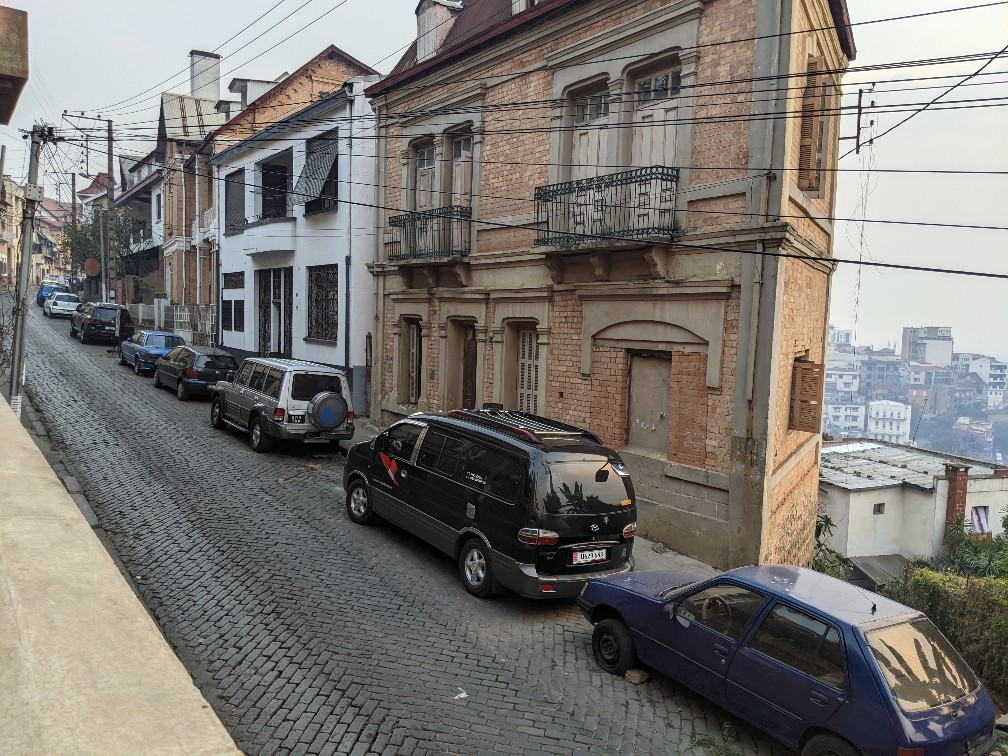
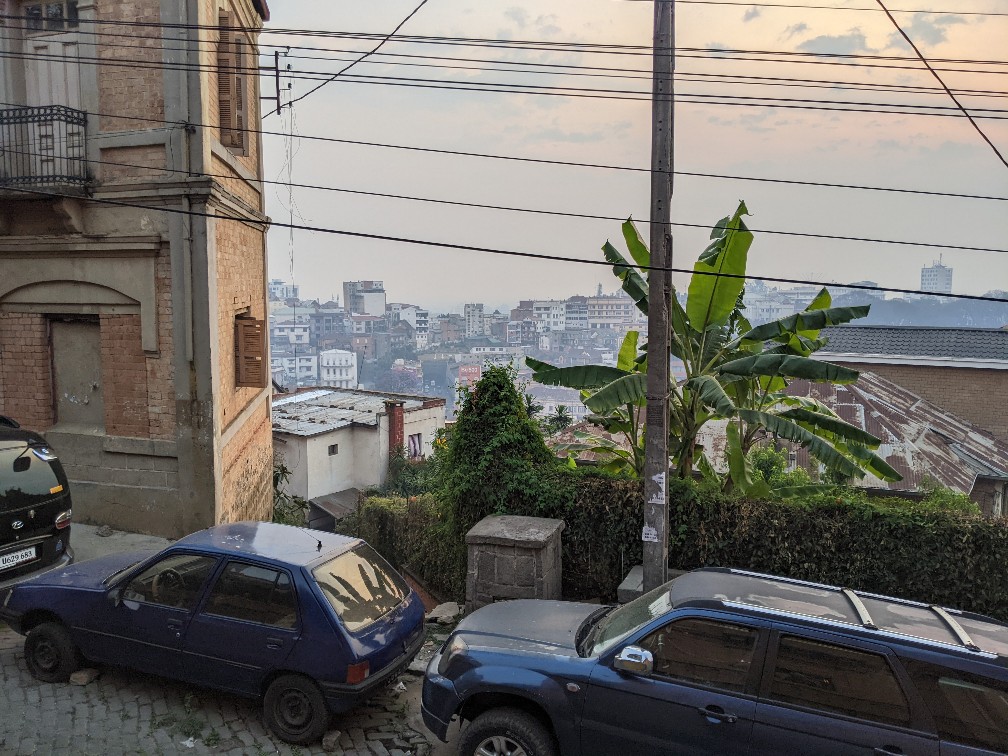
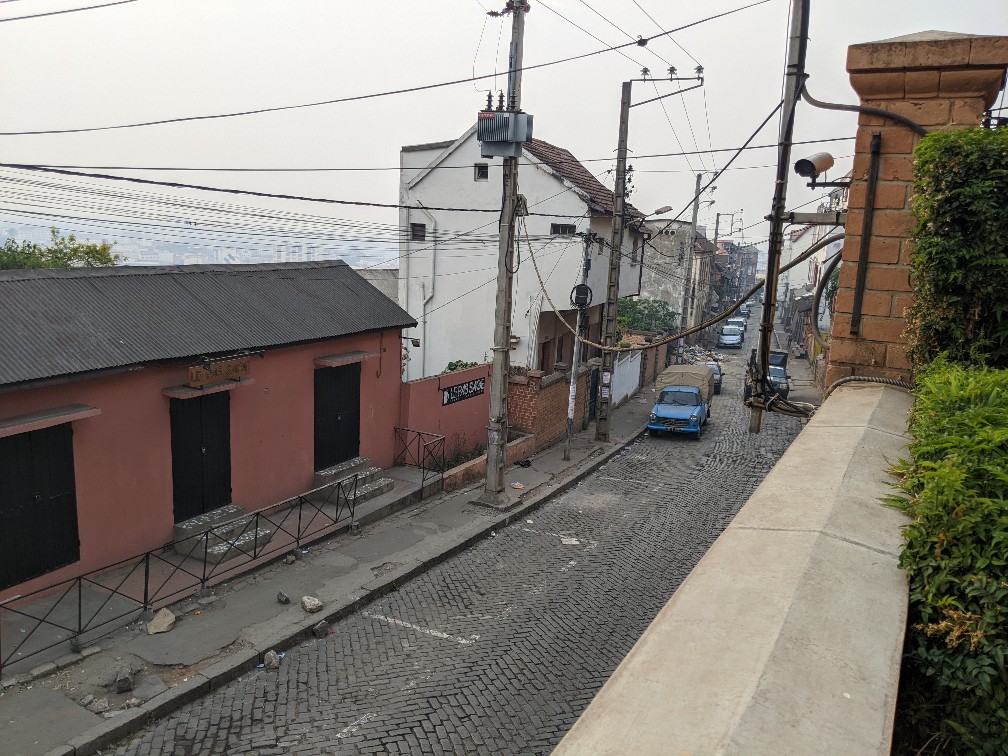
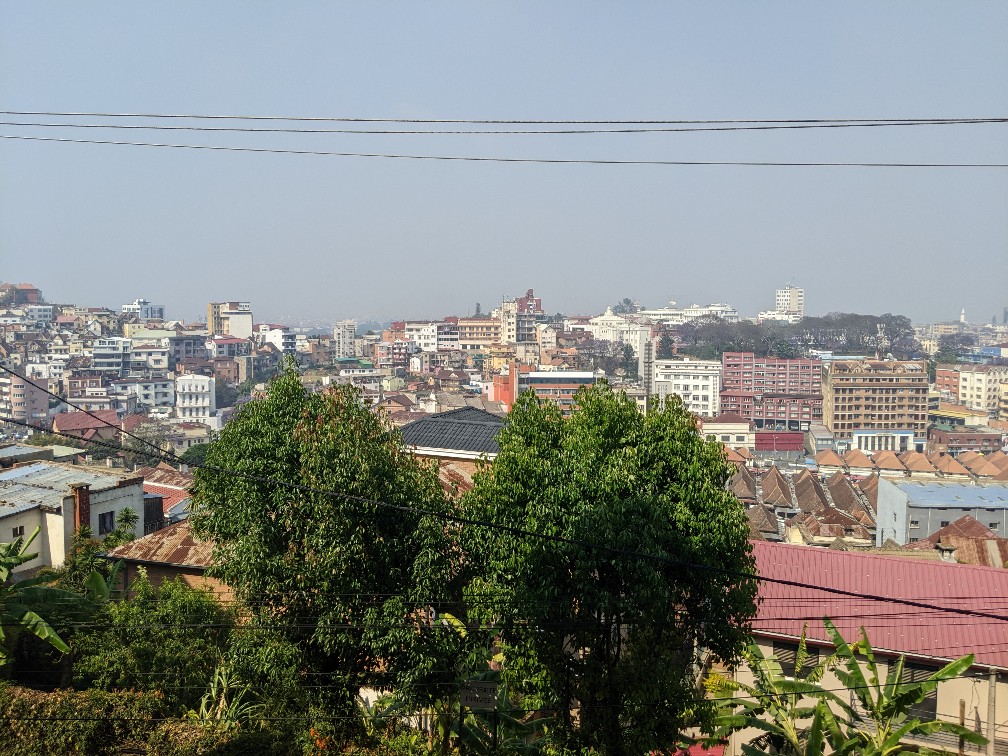
We are sharing the hotel with a group of four women from Southern California who we visited with alittle.
Dinner at the hotel consisted of zucchini soup, curry chicken and of course rice. It was very good. I went to bed early because I didn’t slept well the night before and because we changed time zones and lost an hour.
Some other information about Madagascar . . . it is the second largest island nation in the world, behind Indonesia. It is the fourth largest island in the world. It broke free from Gondwana millions of years ago.
80% of the Malagasy are farmers. The primary exports are vanilla, gold, copper, nickel, cobalt and precious stones. Their biggest imports are petroleum and rice. There is a lot of corruption in the country and they rank 147th out of 180 on the corruption index. The official languages are Malagasy and French. They became a French colony in 1897 and earned their independence in 1960.




